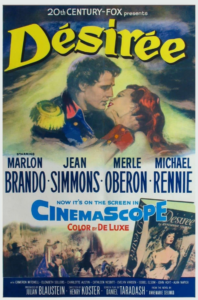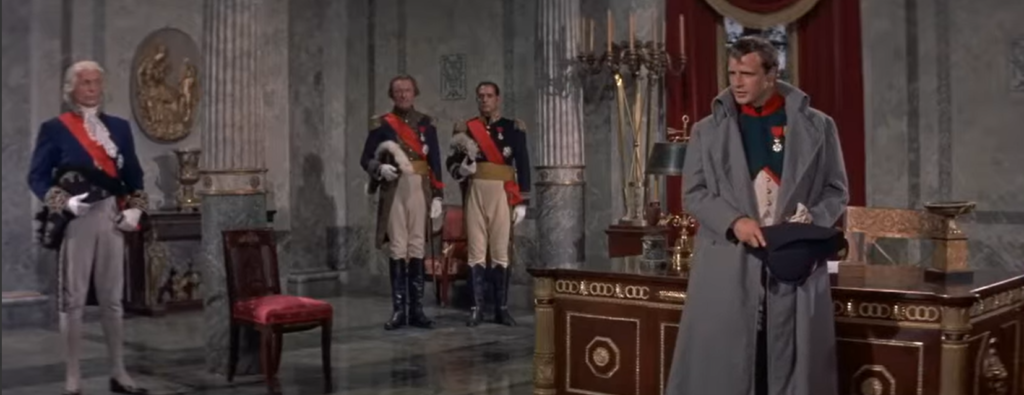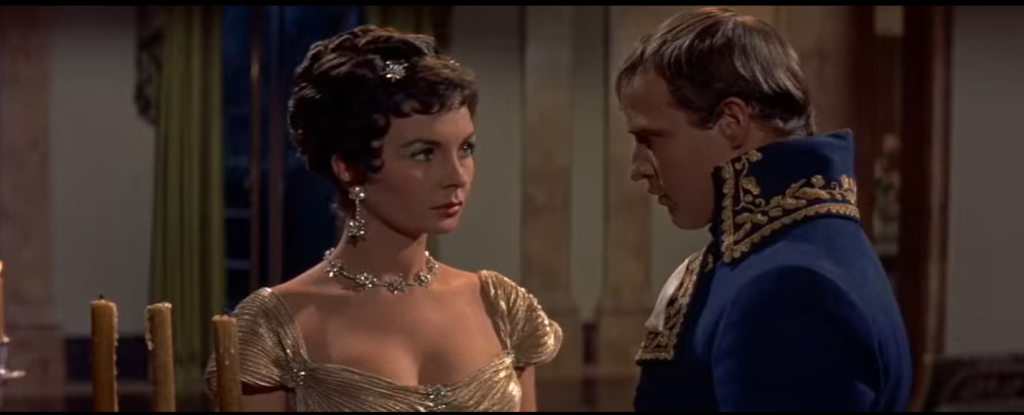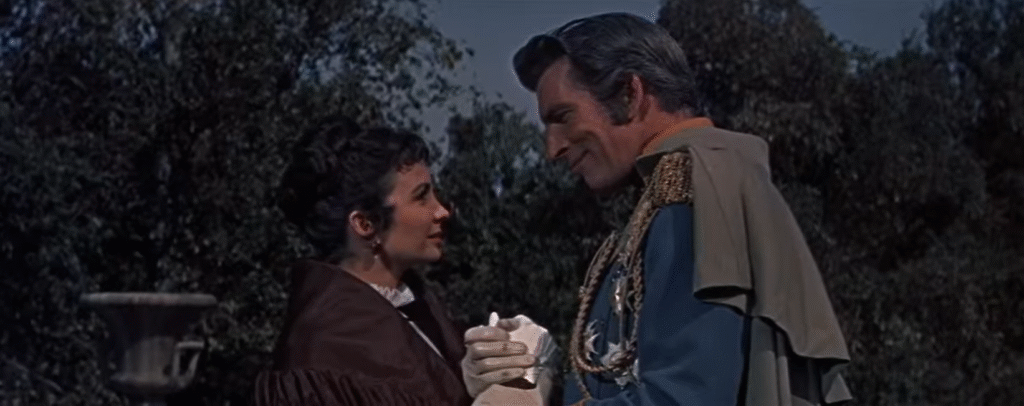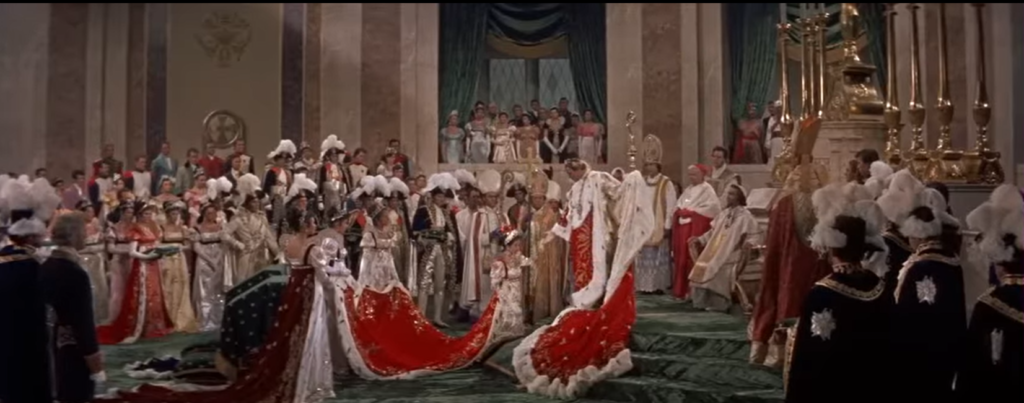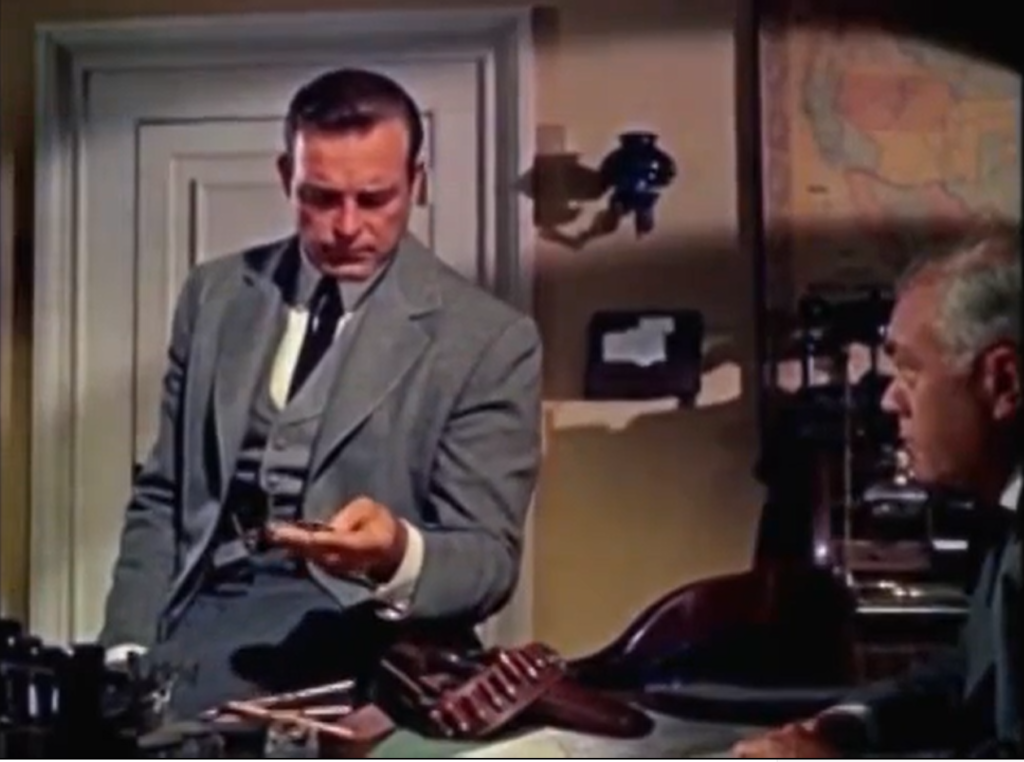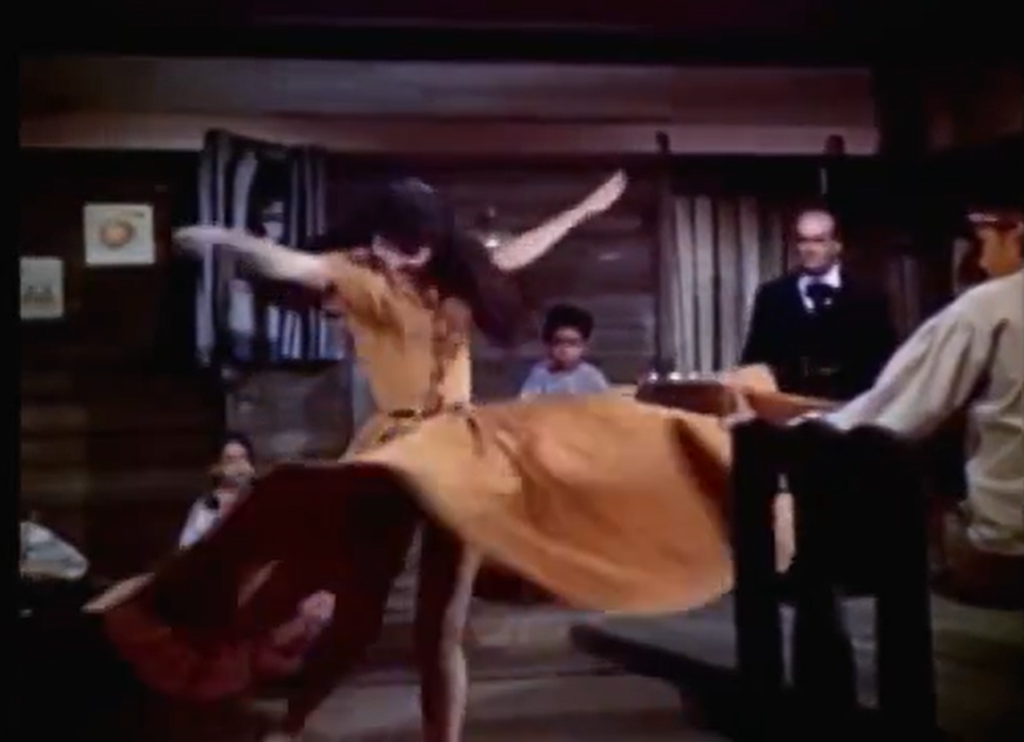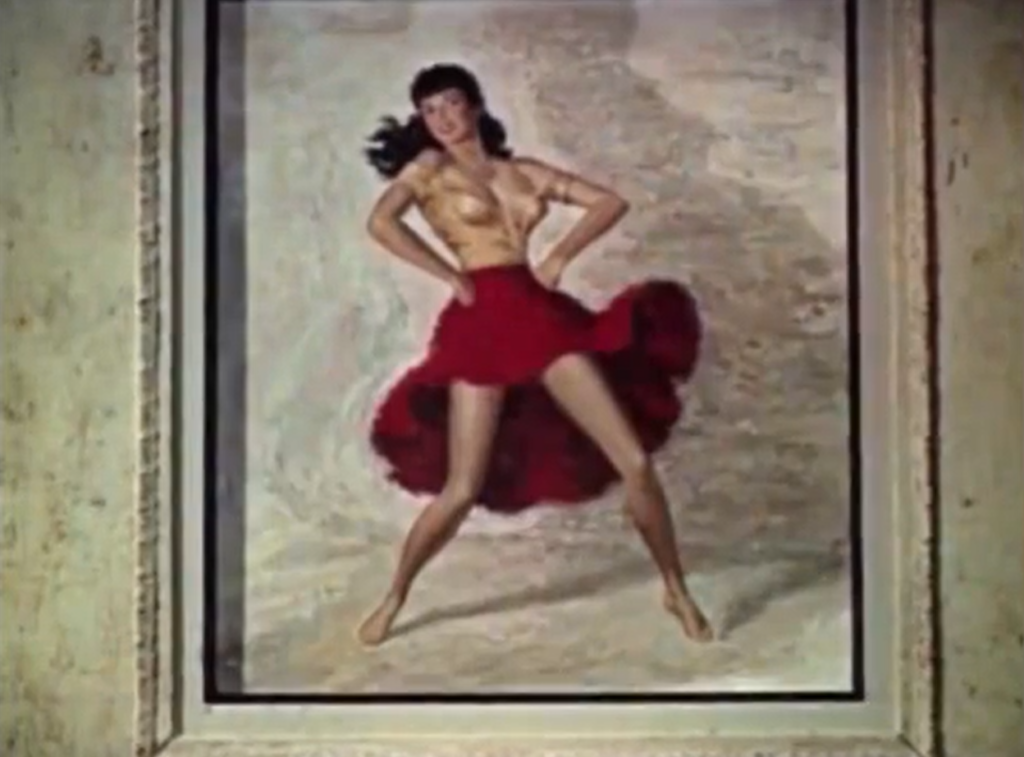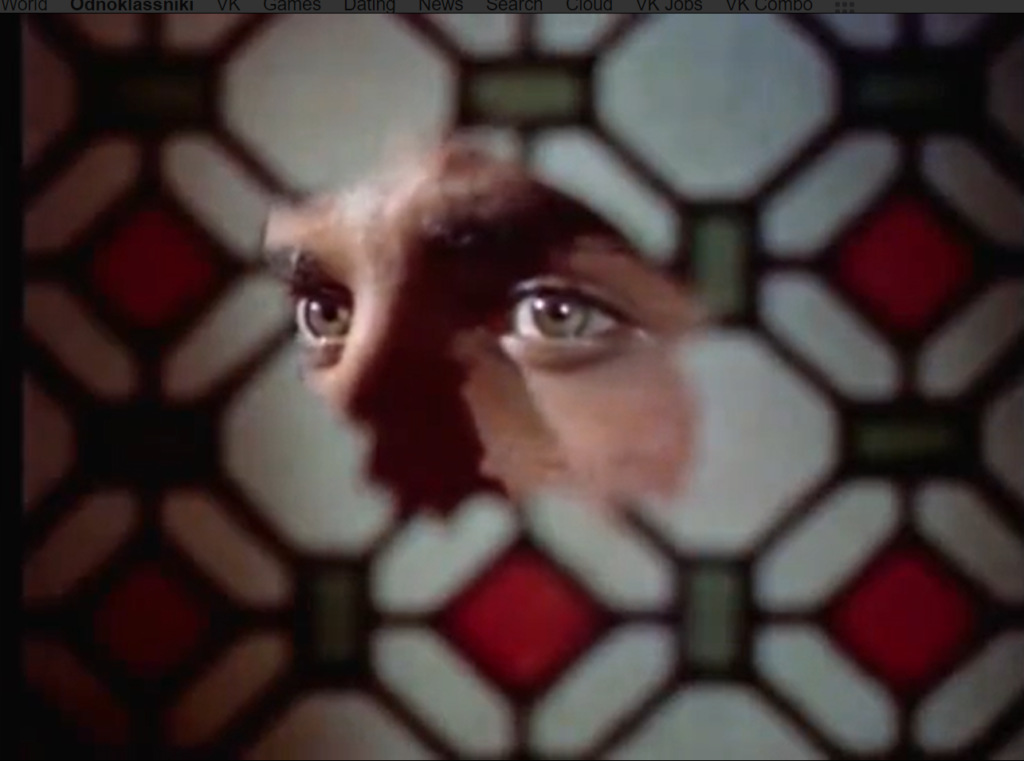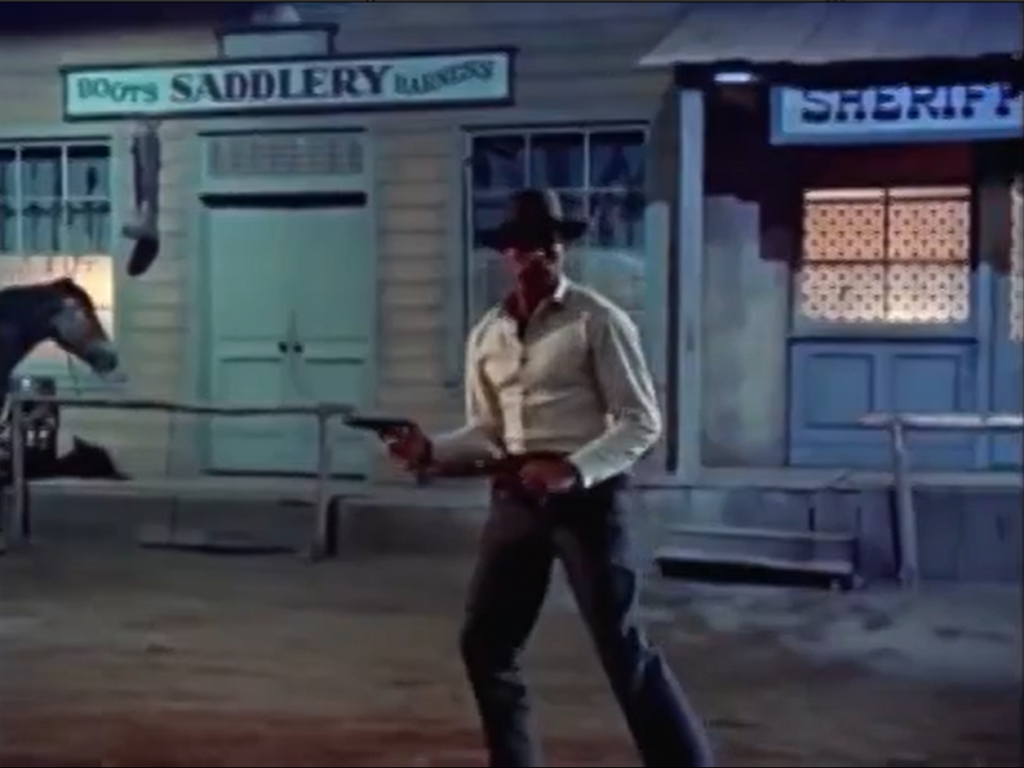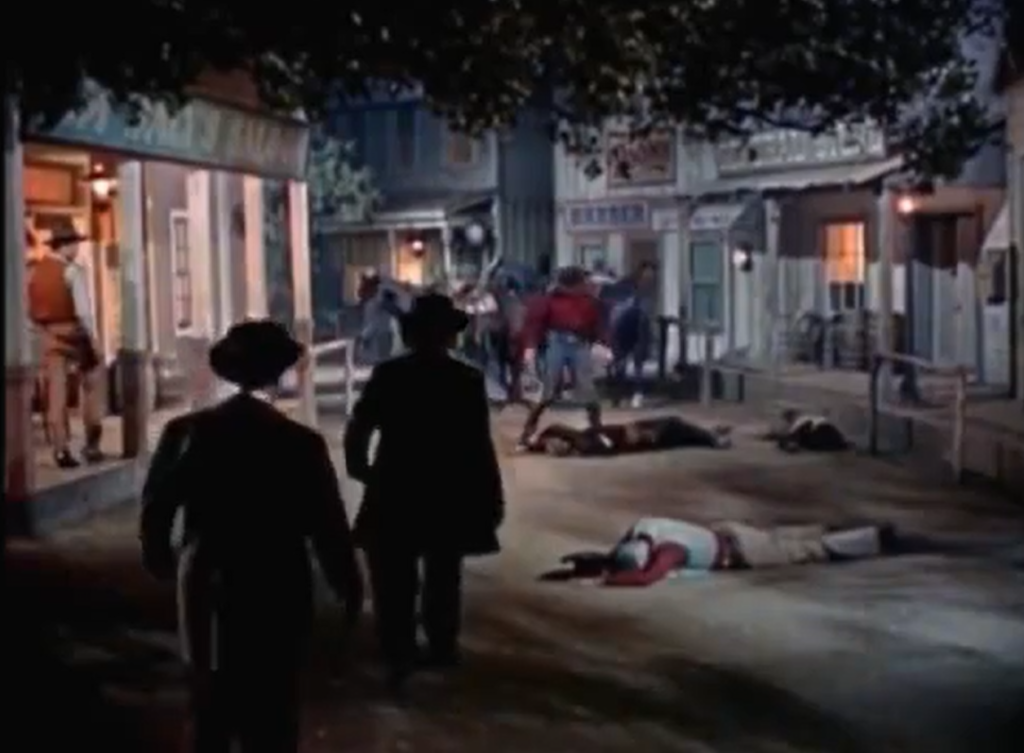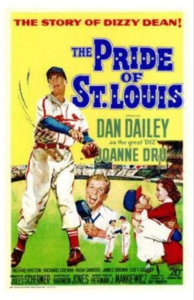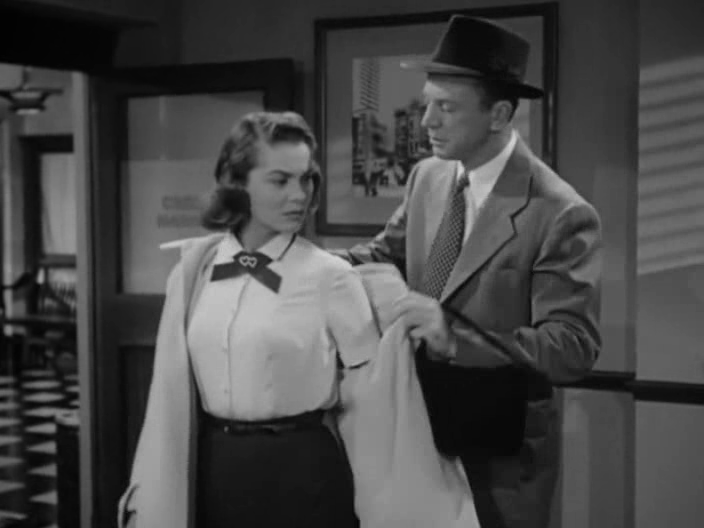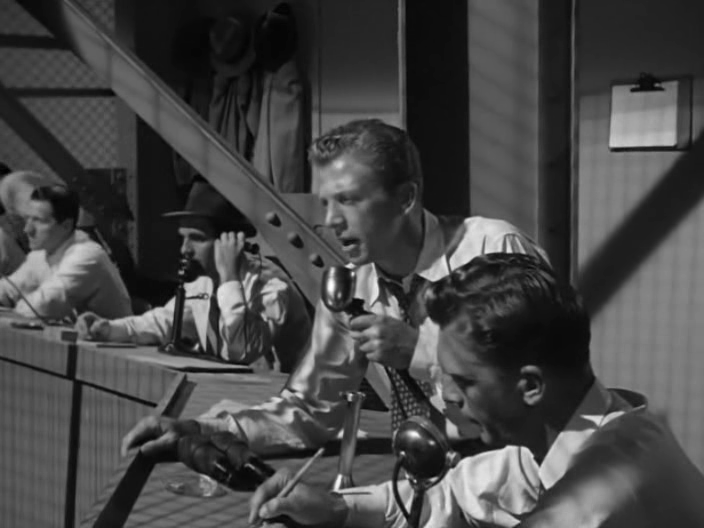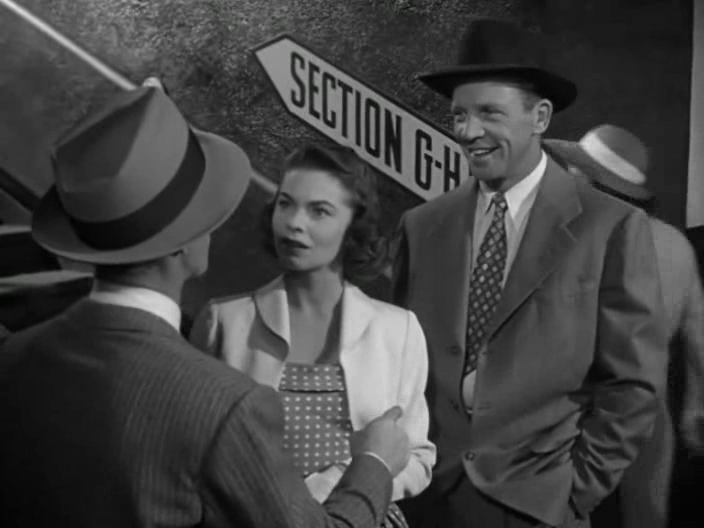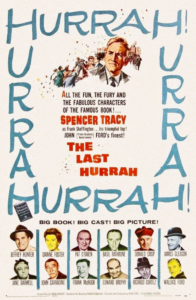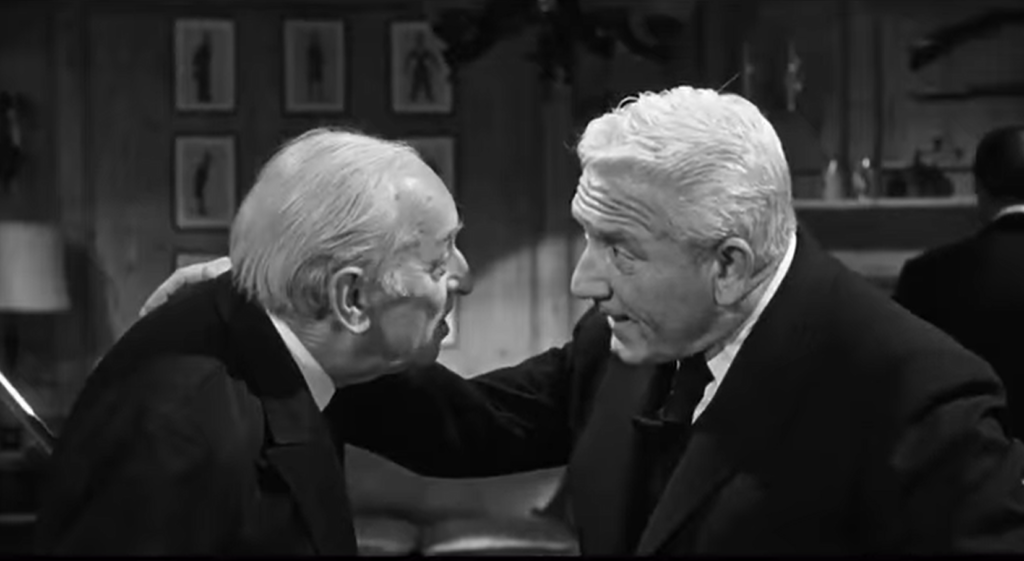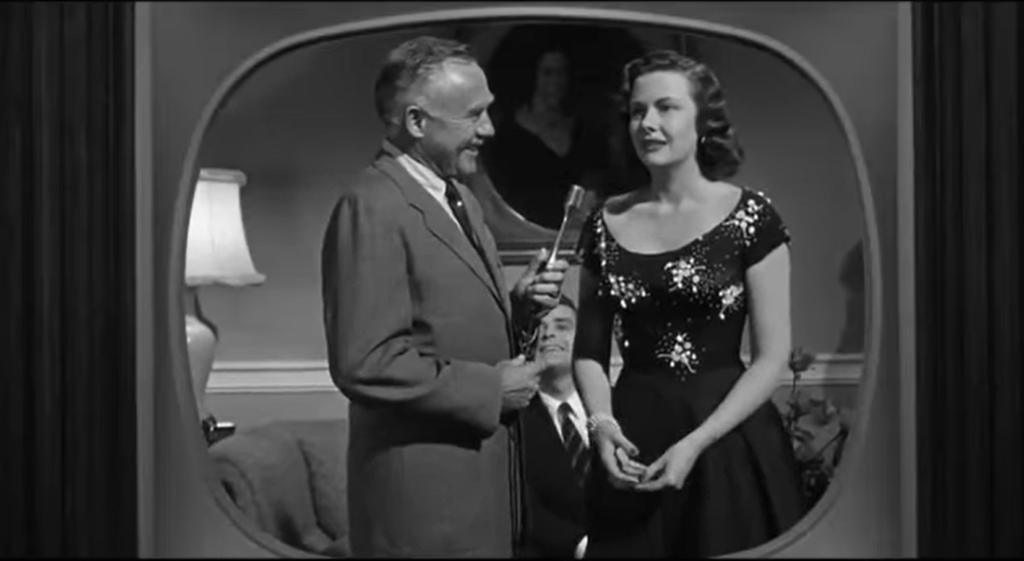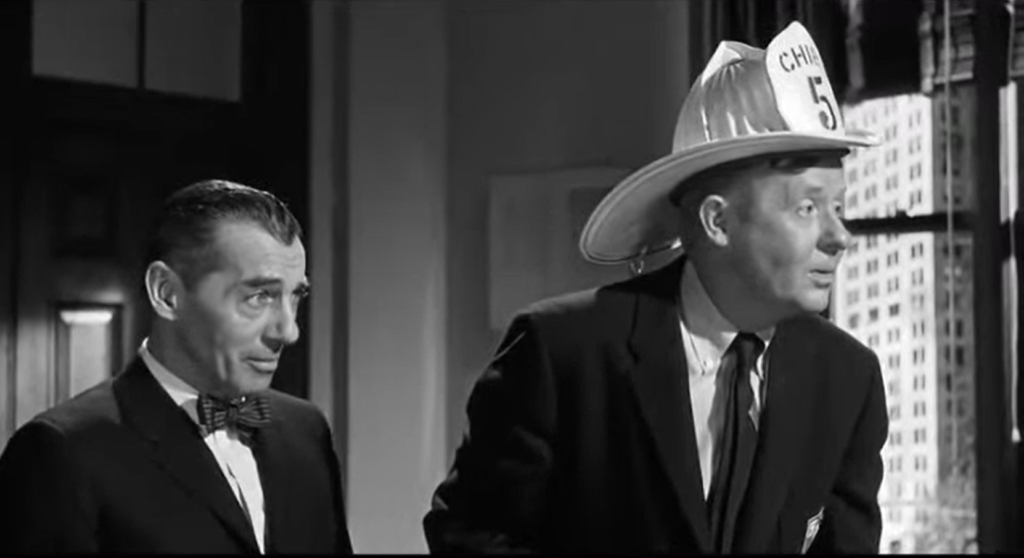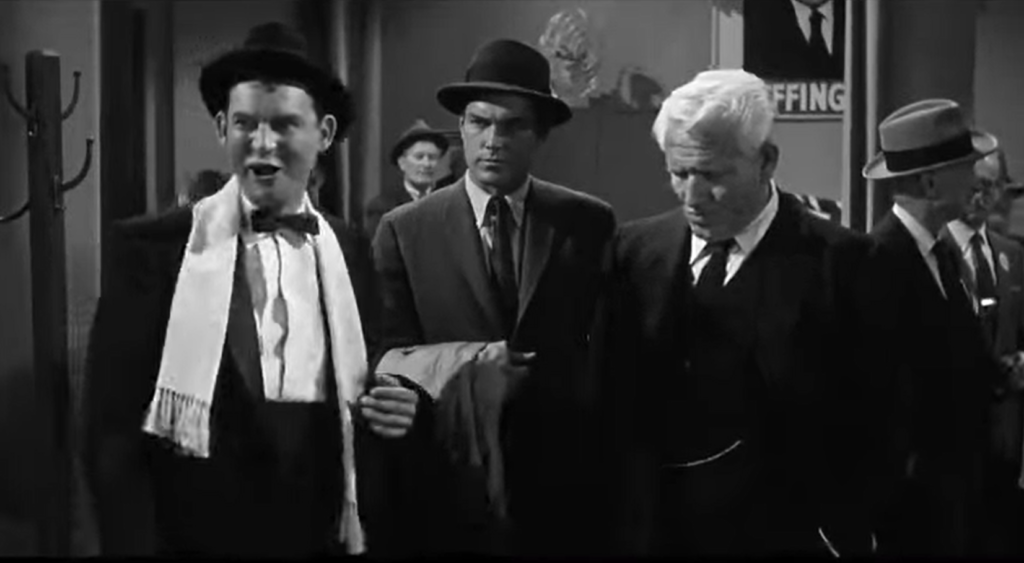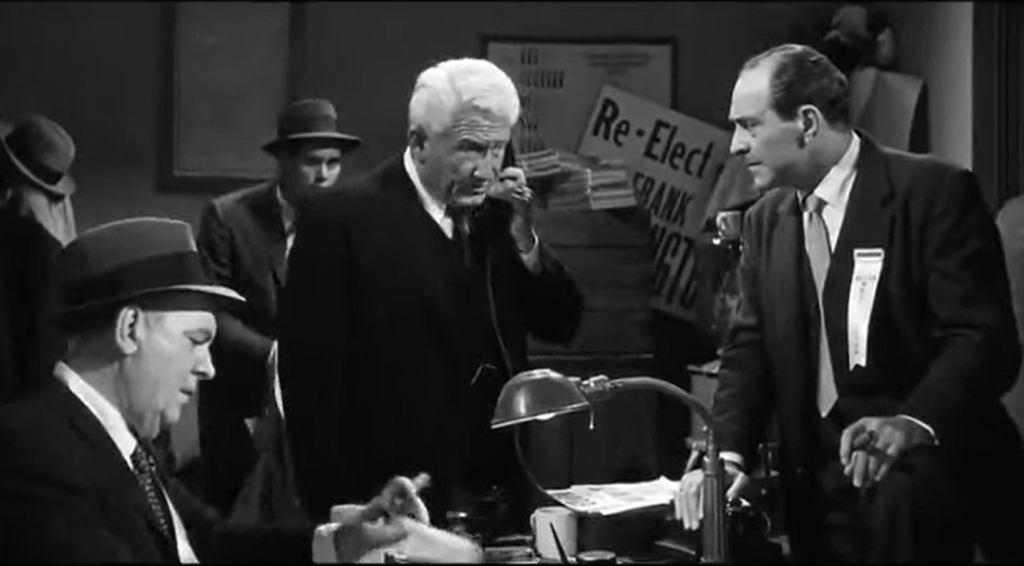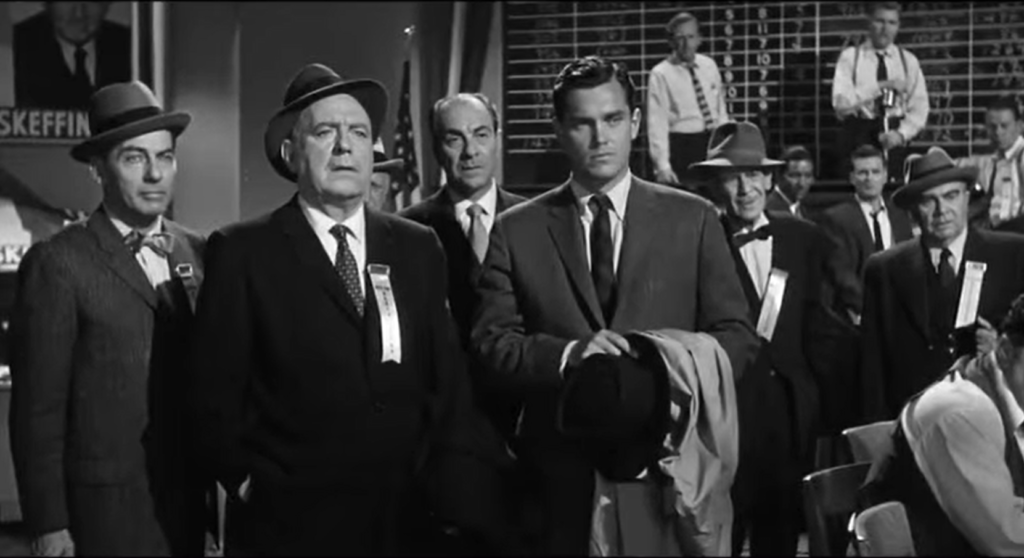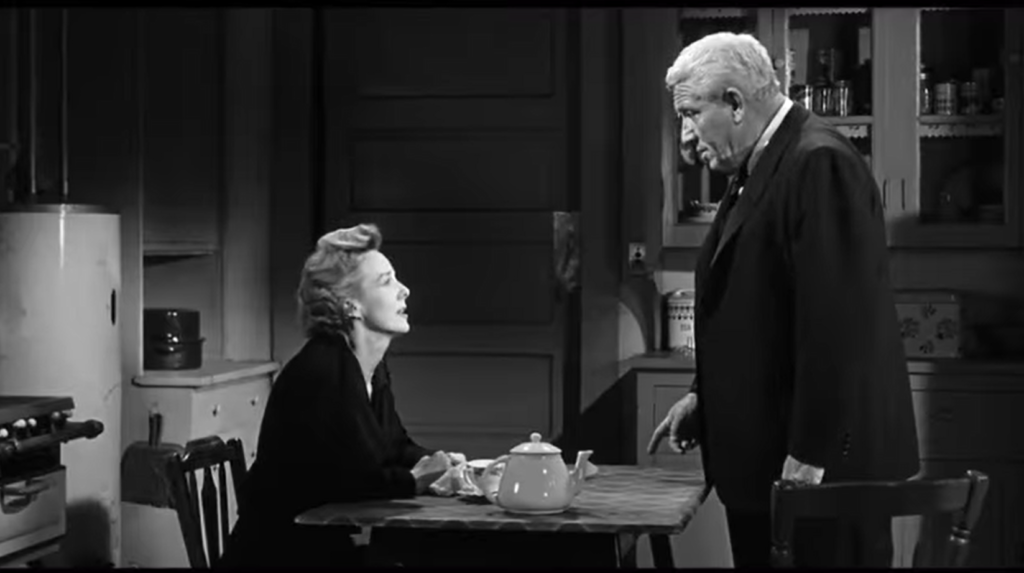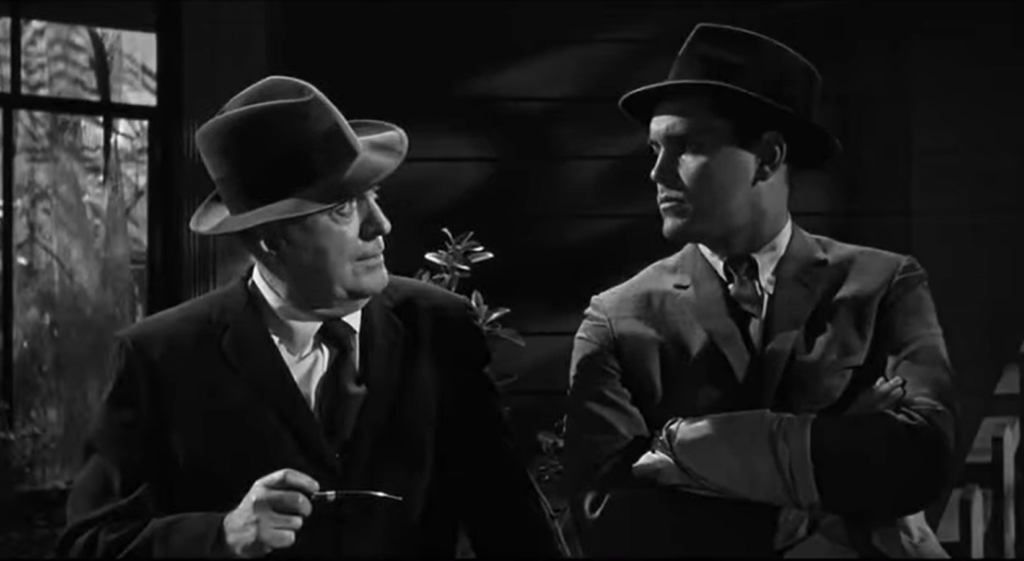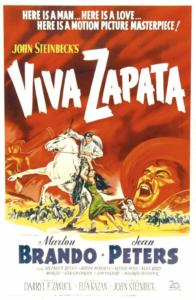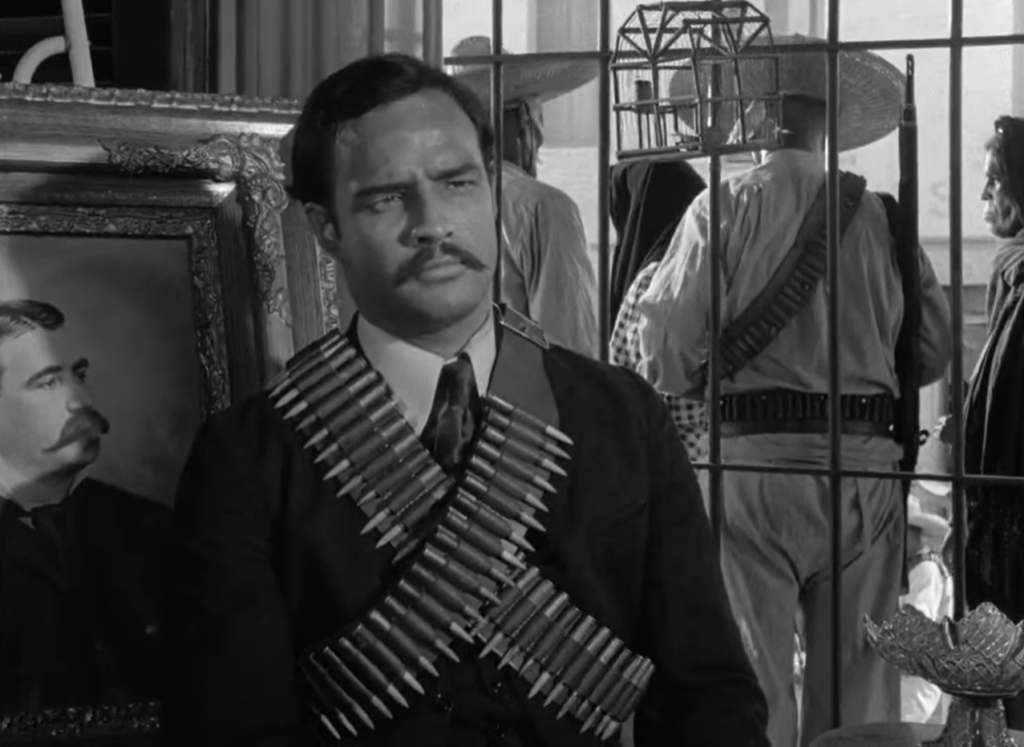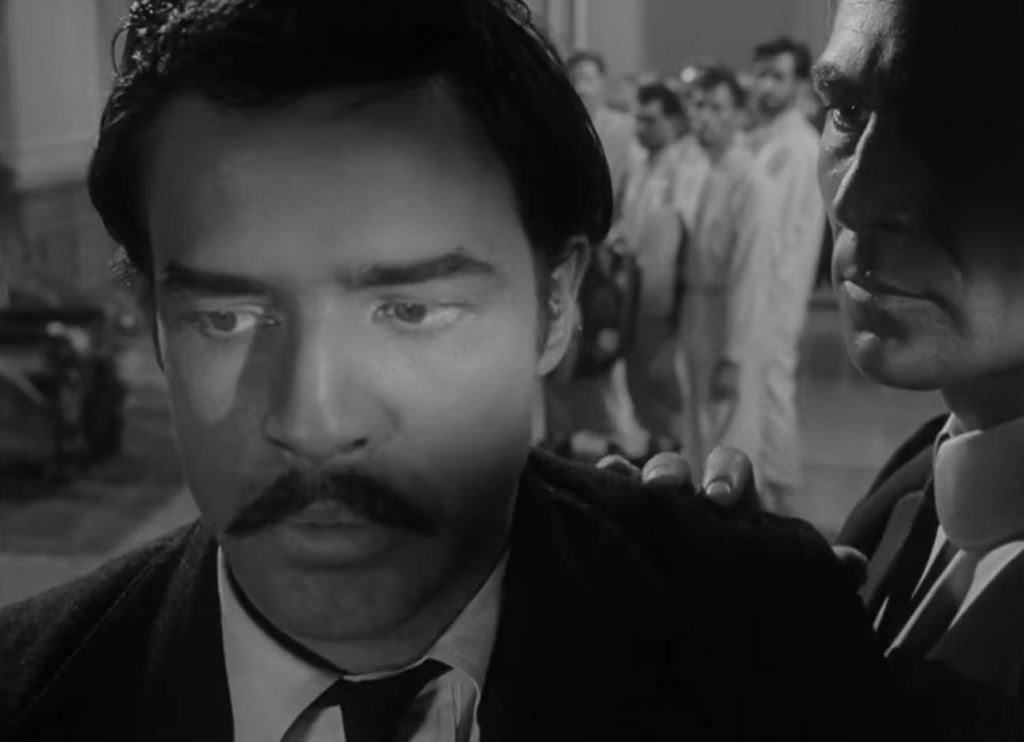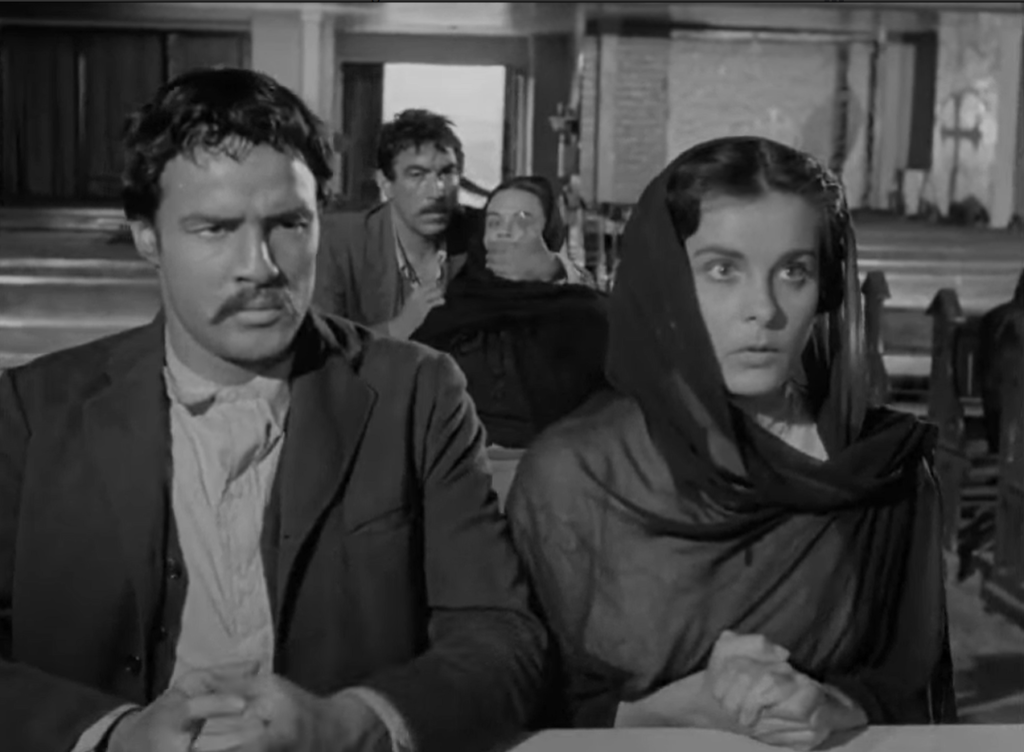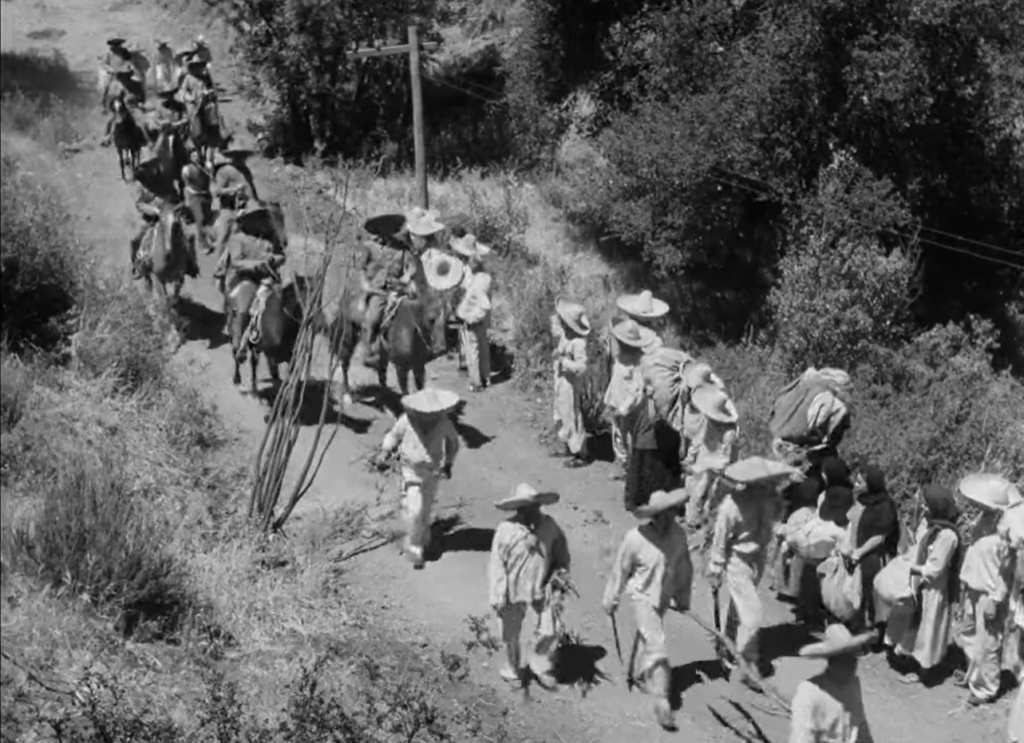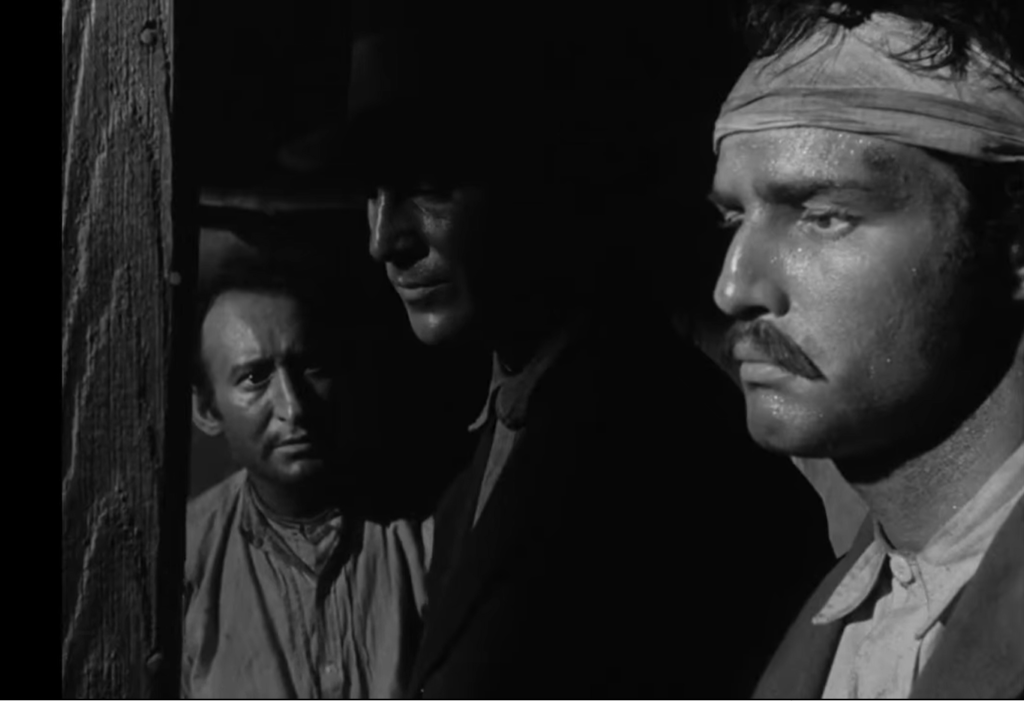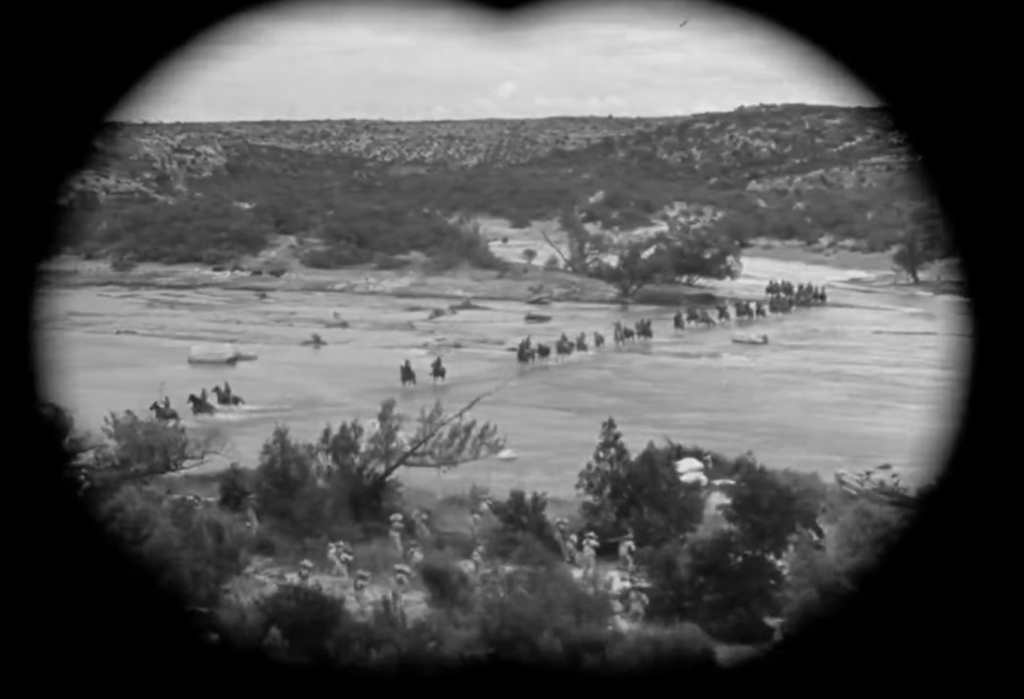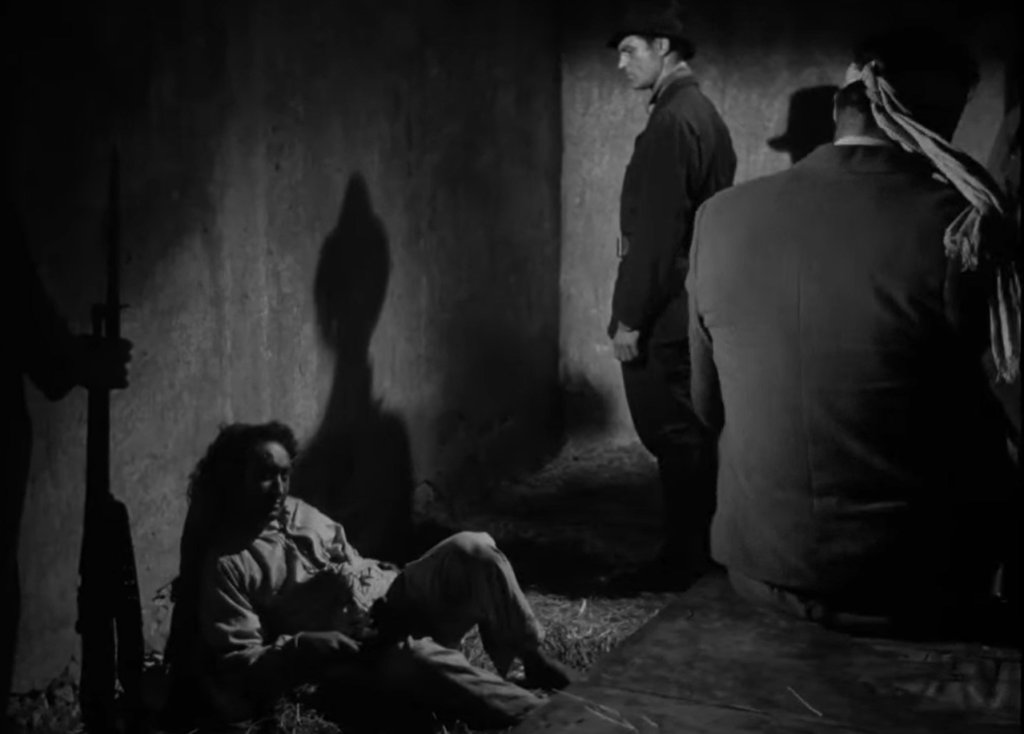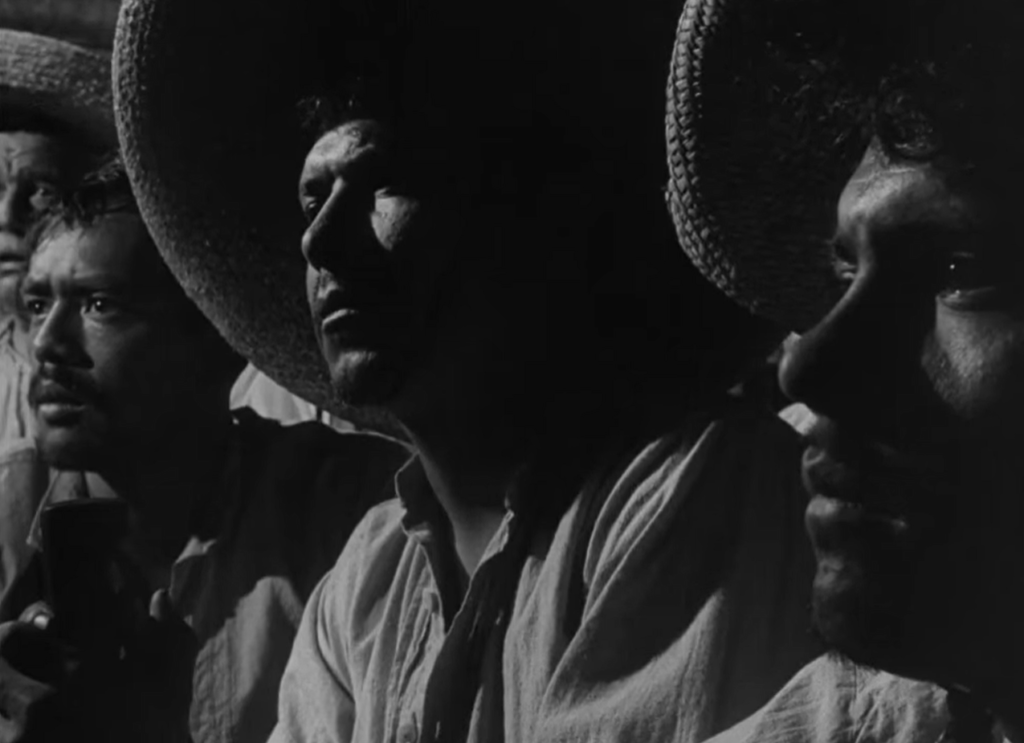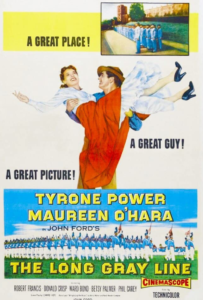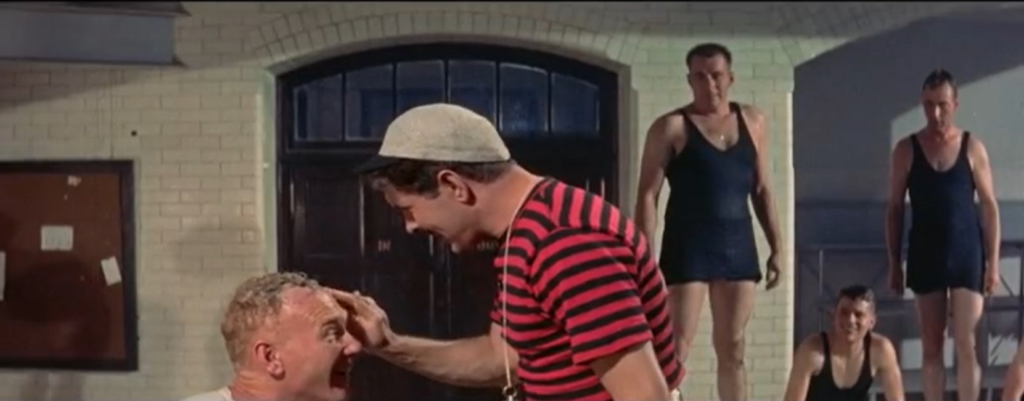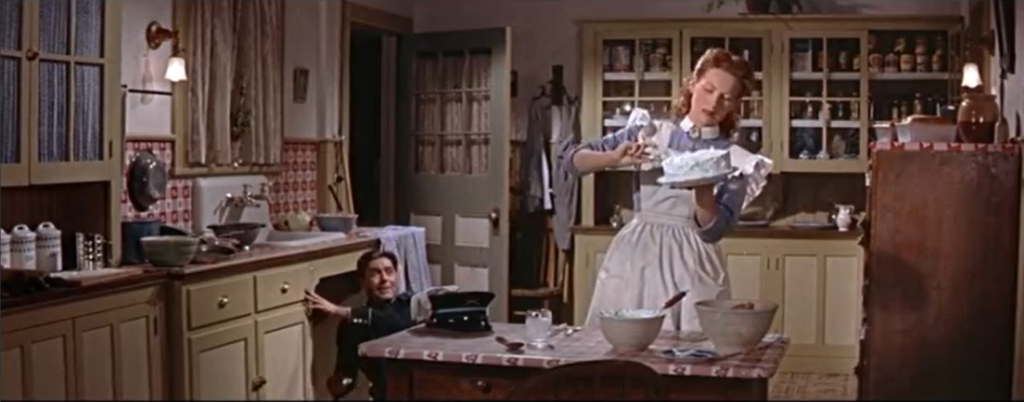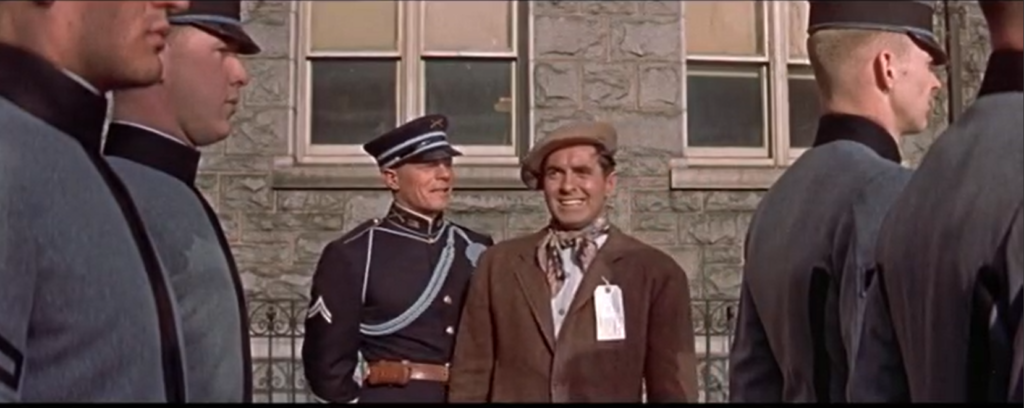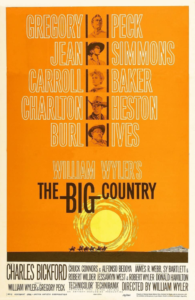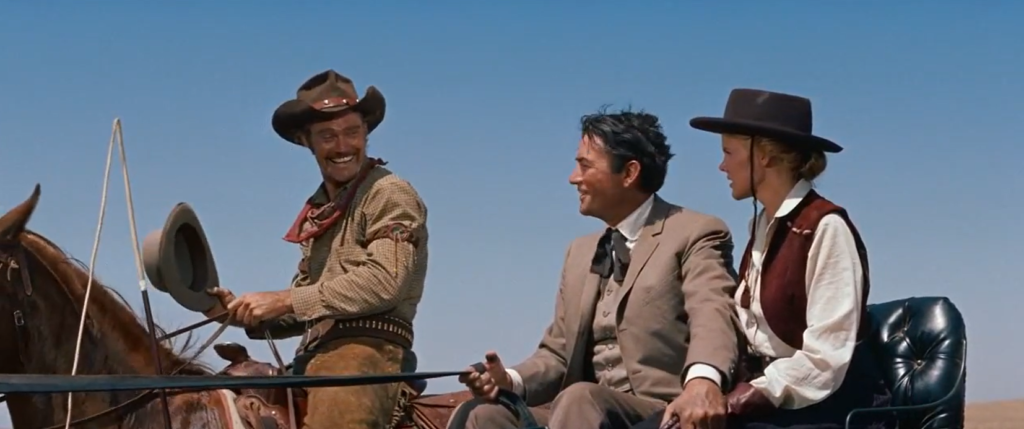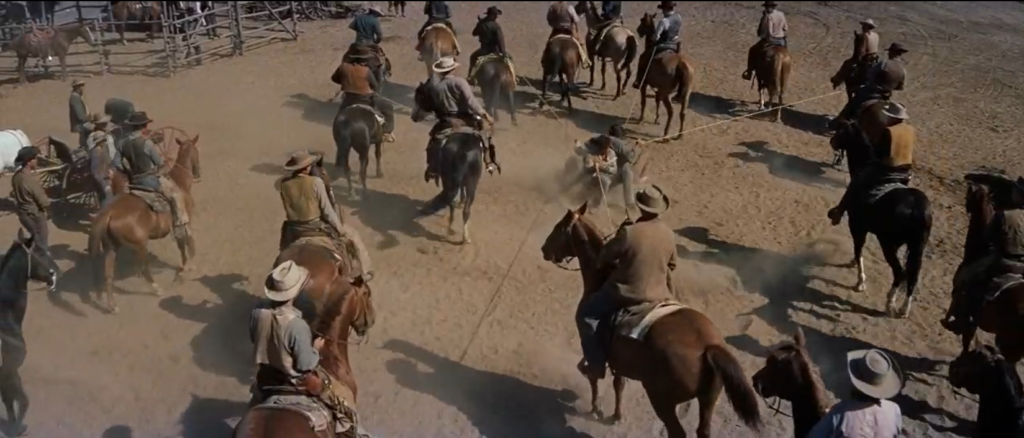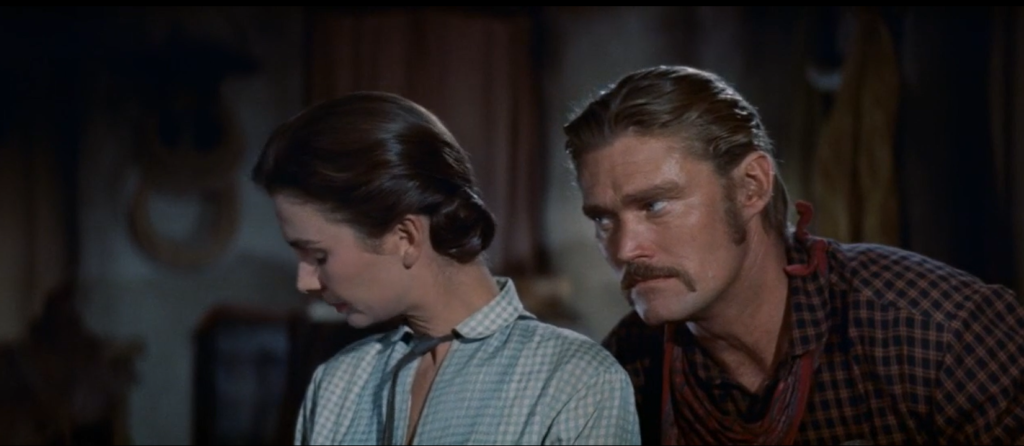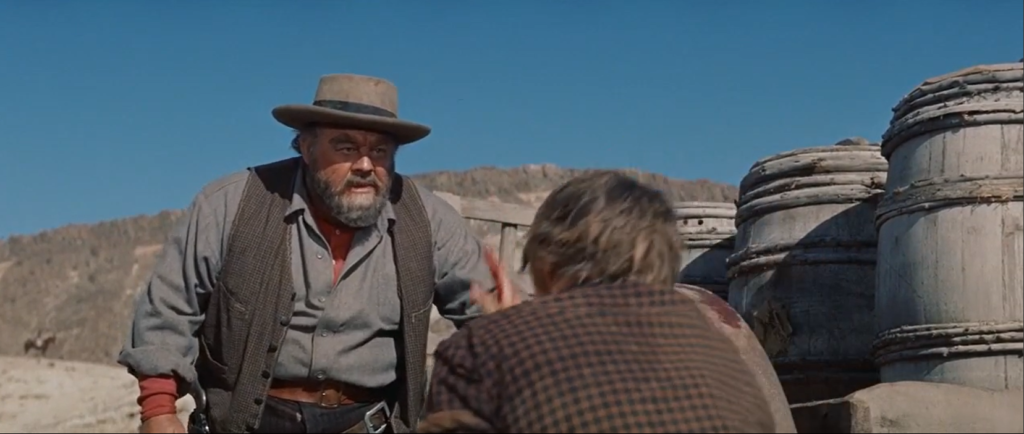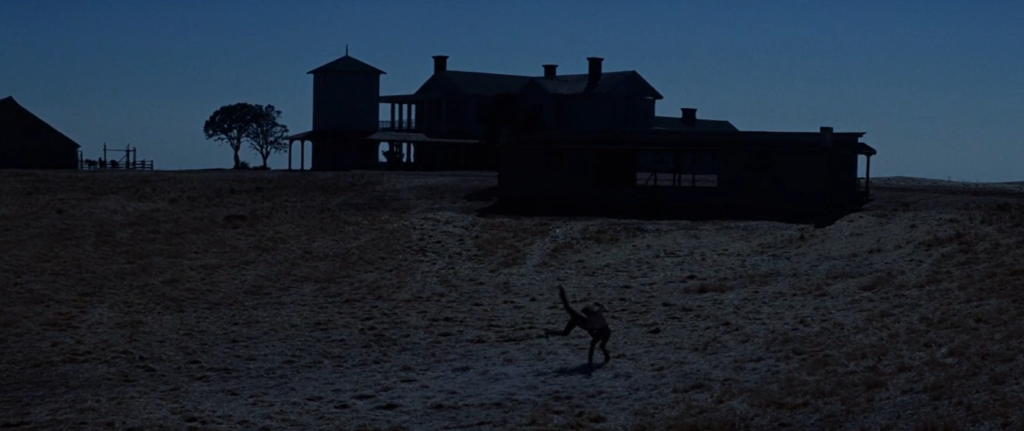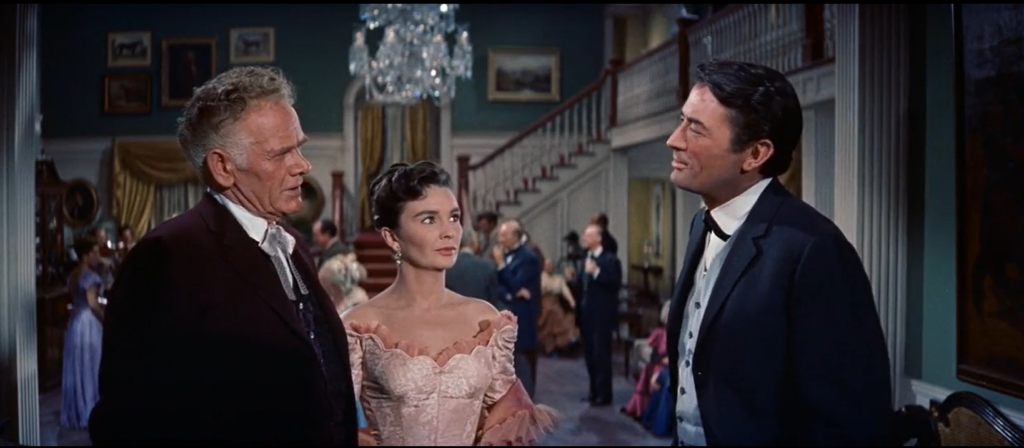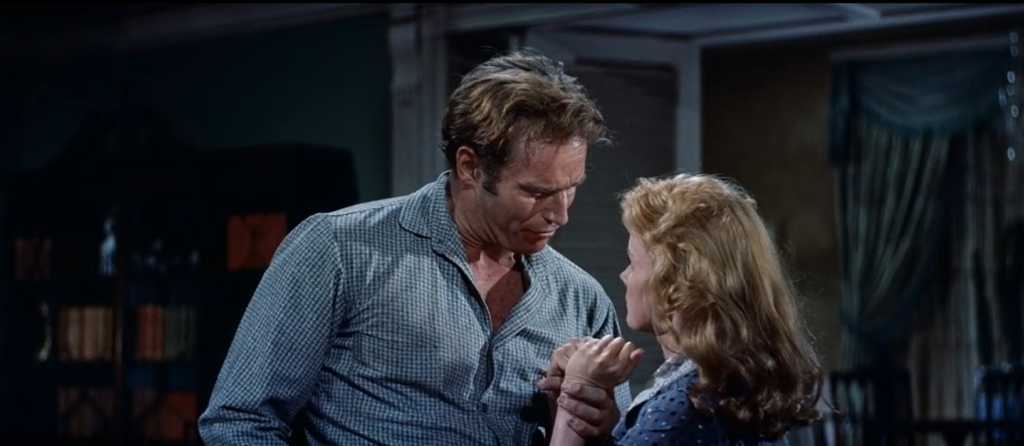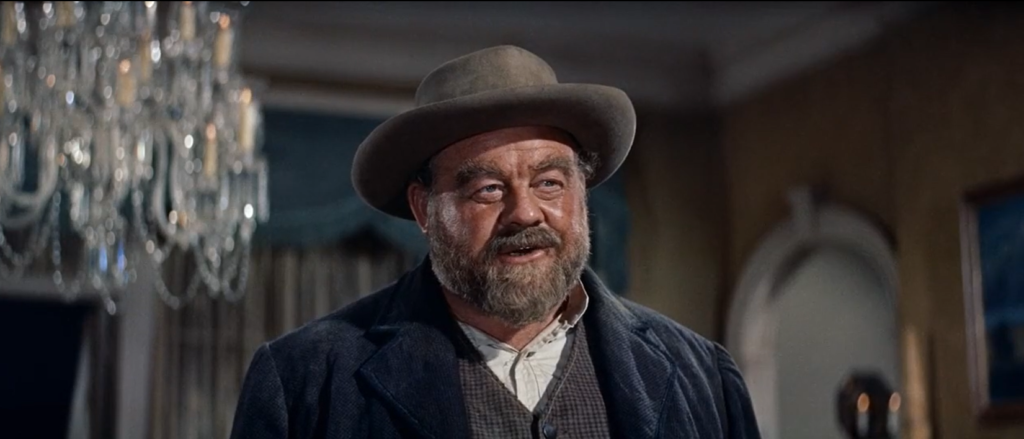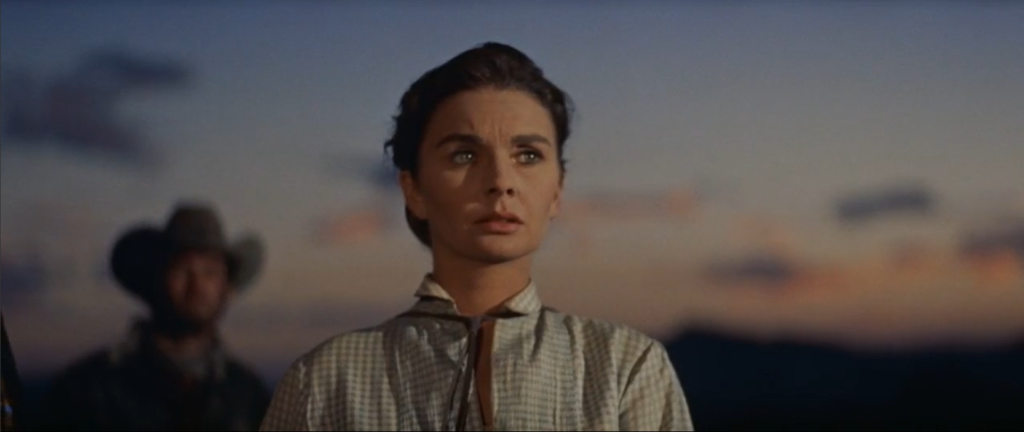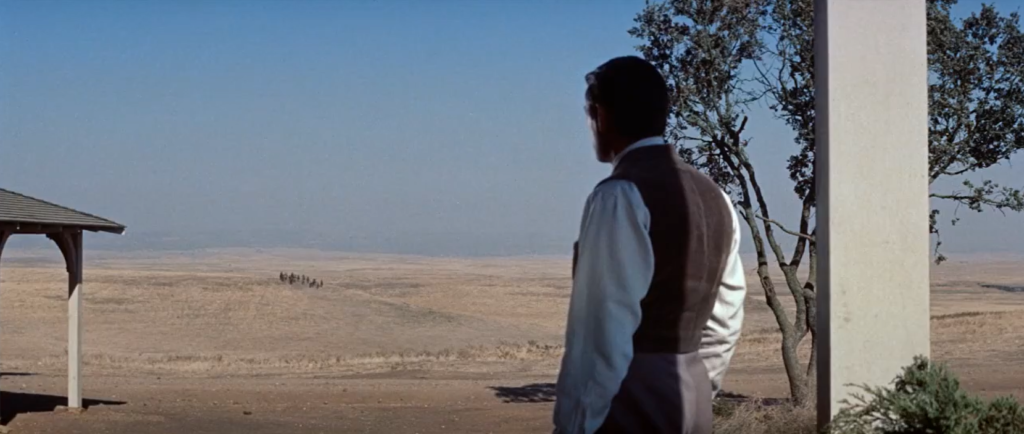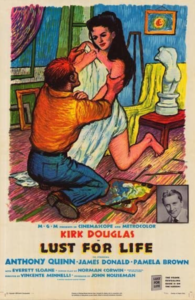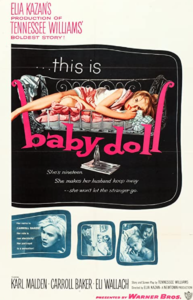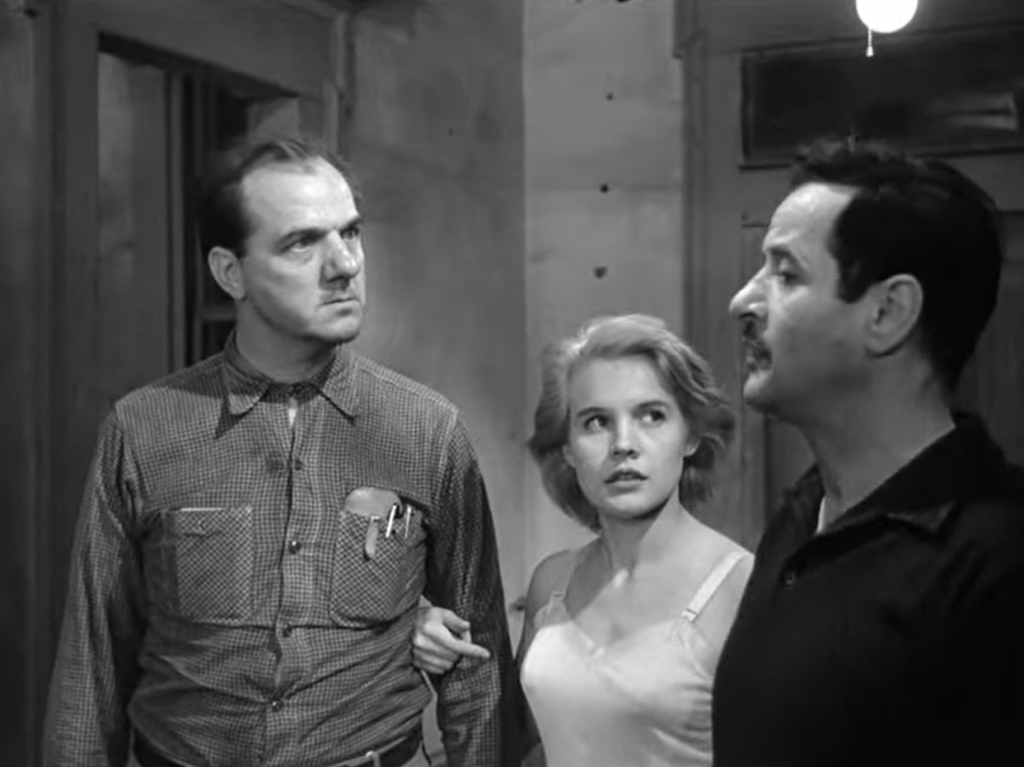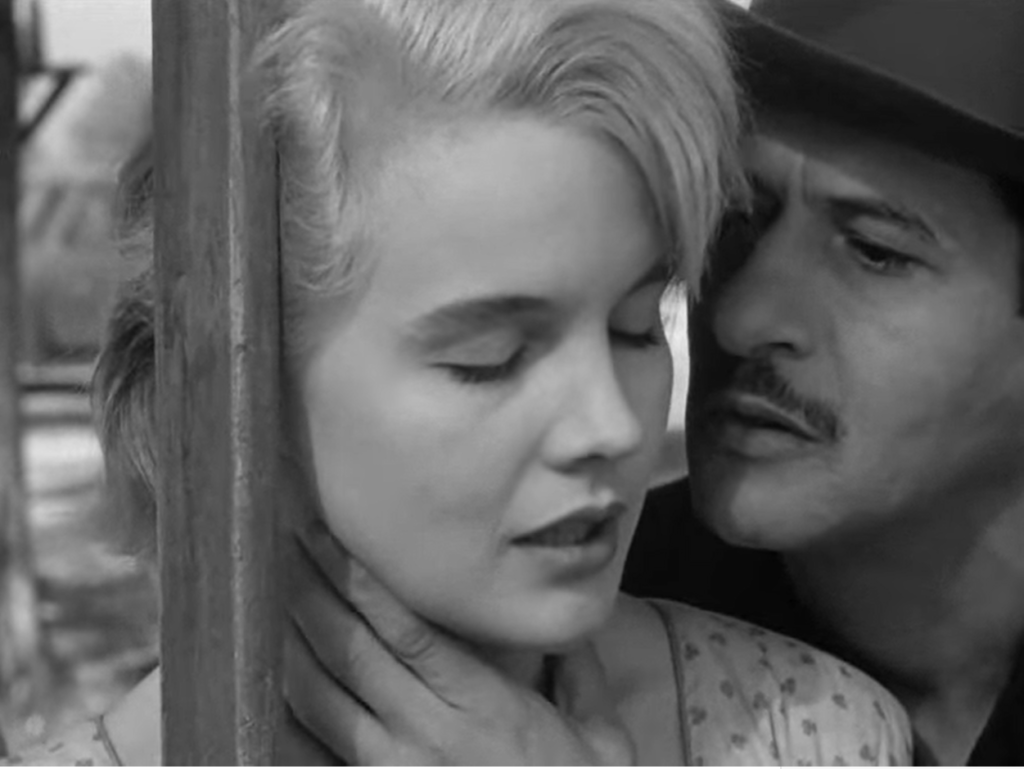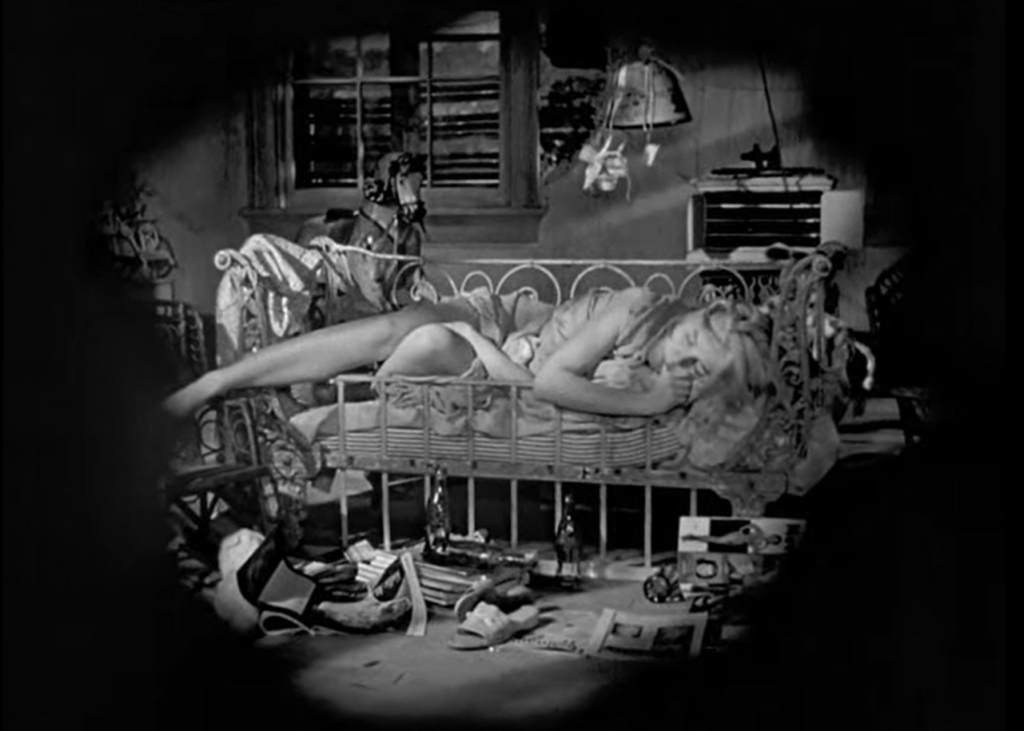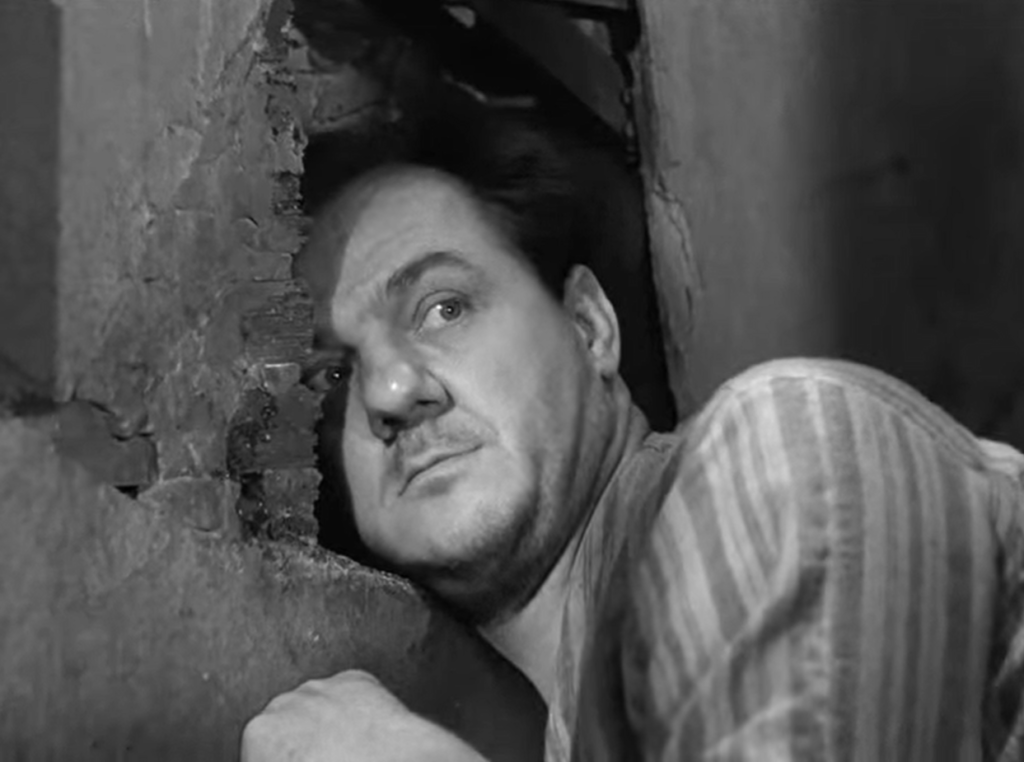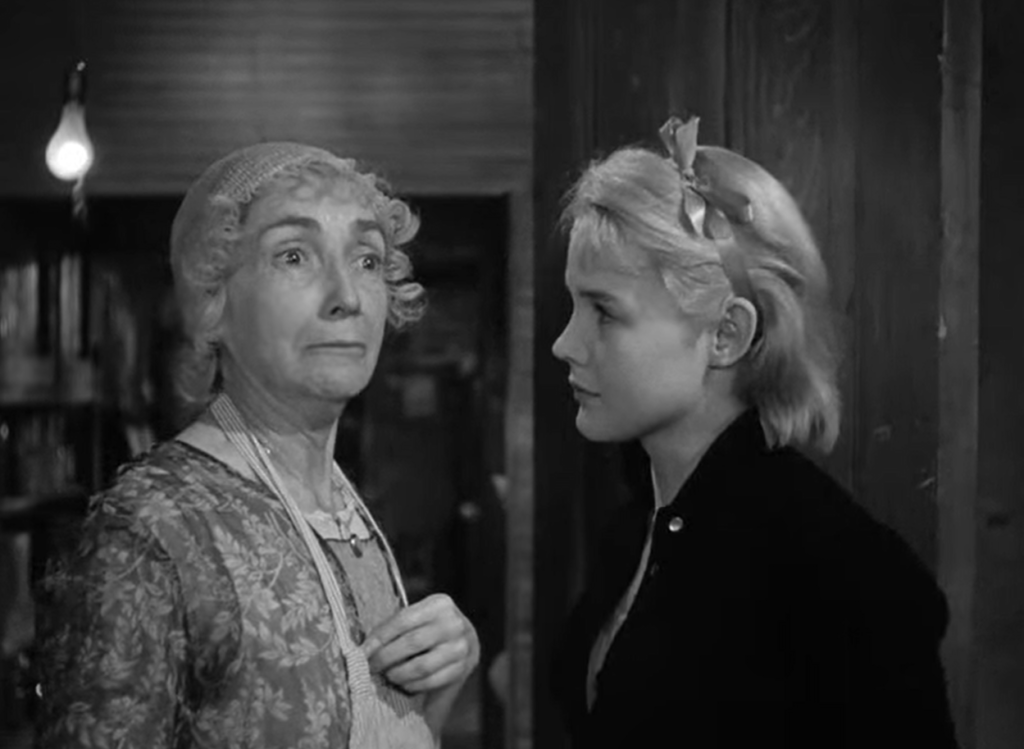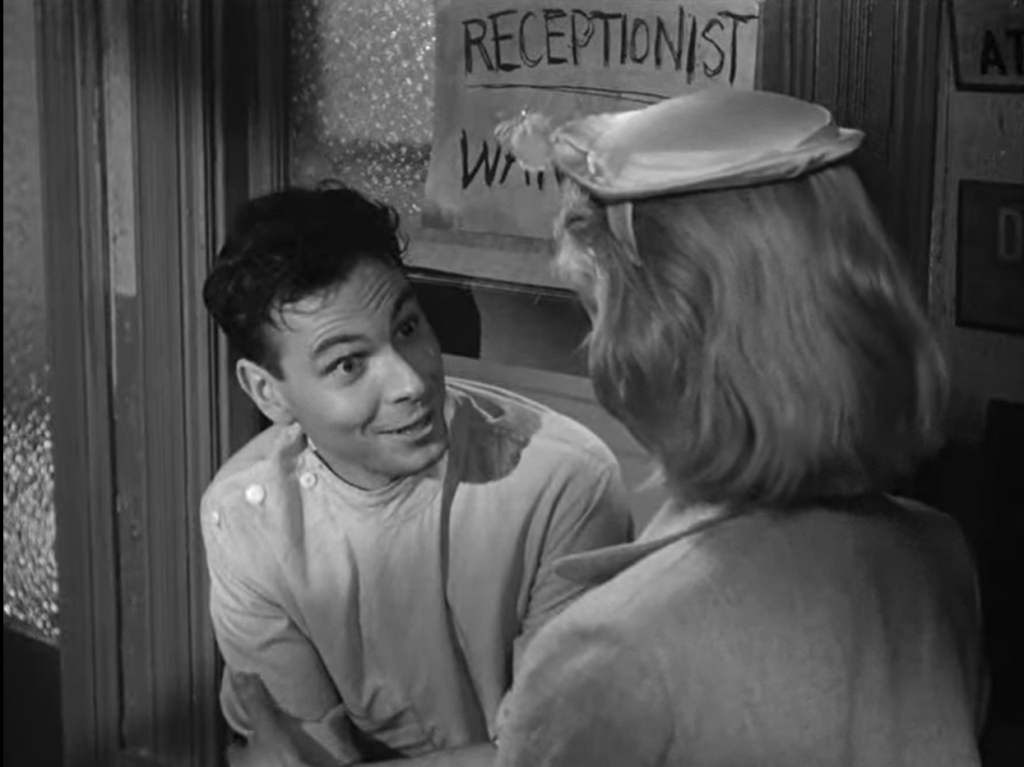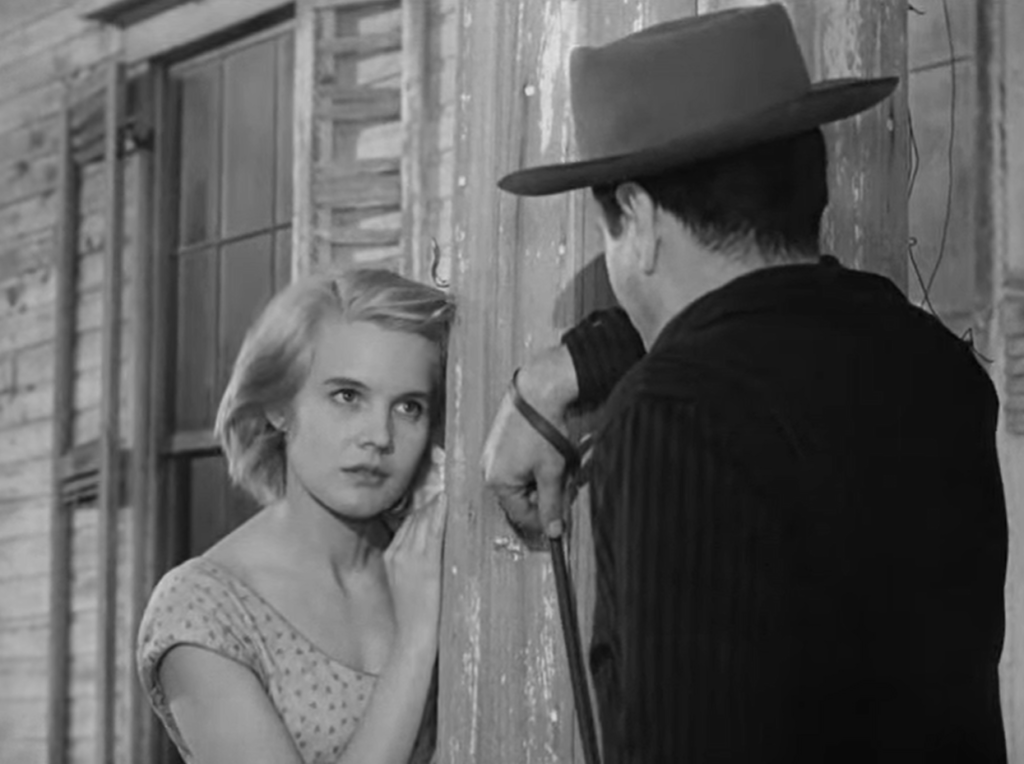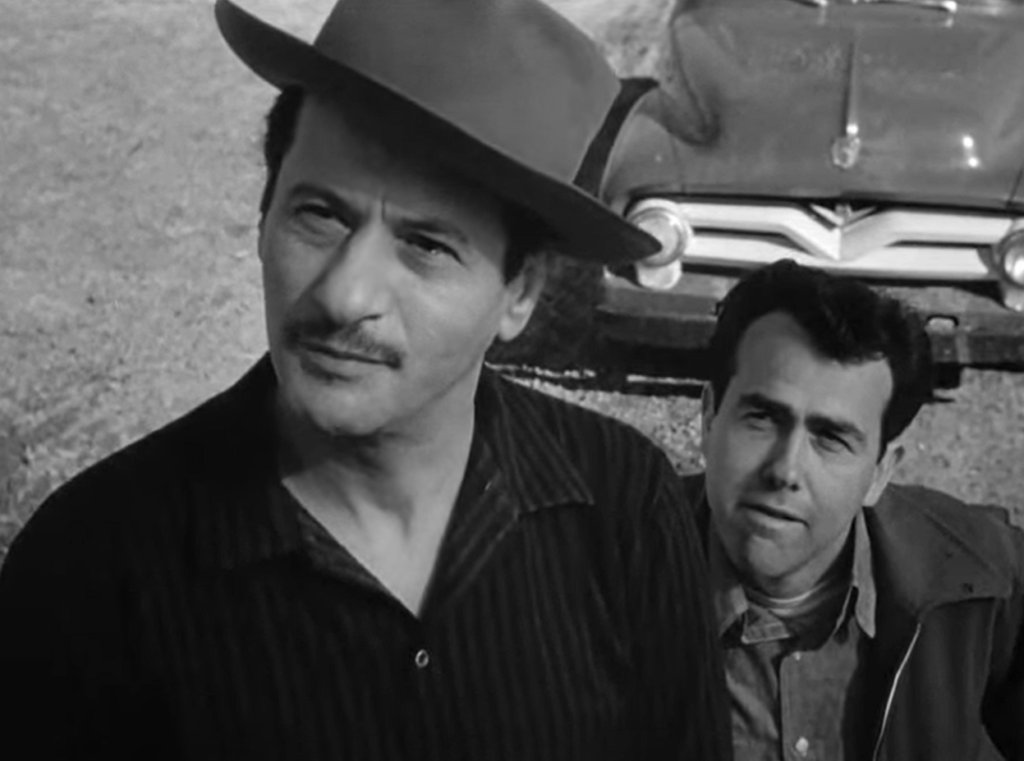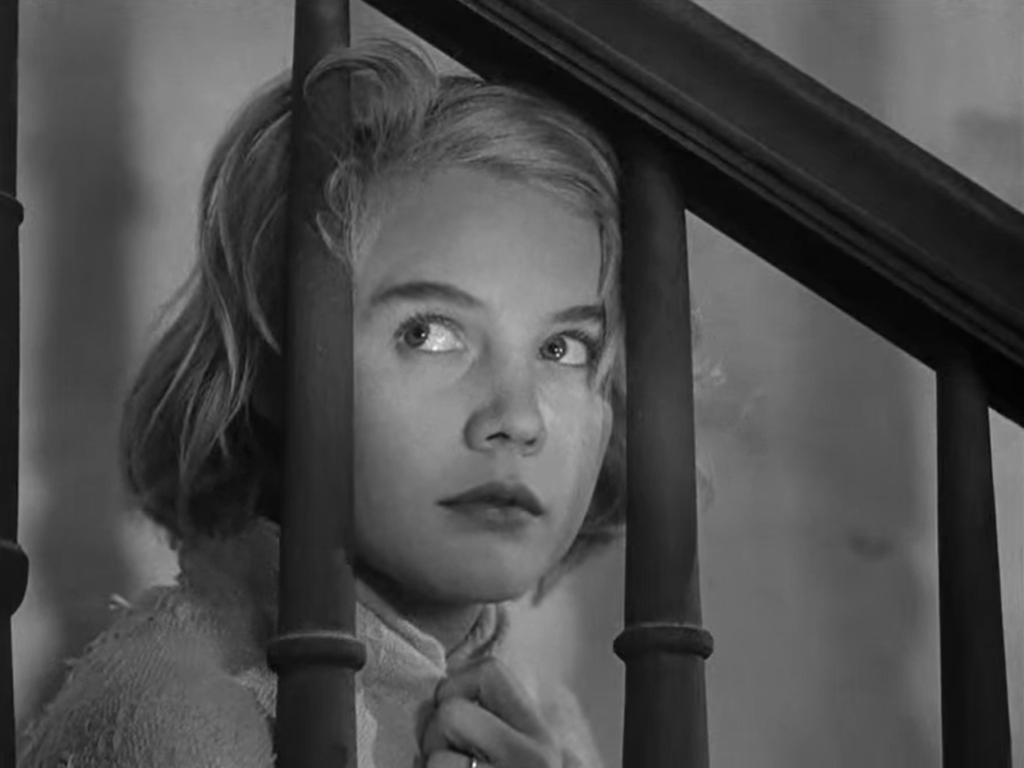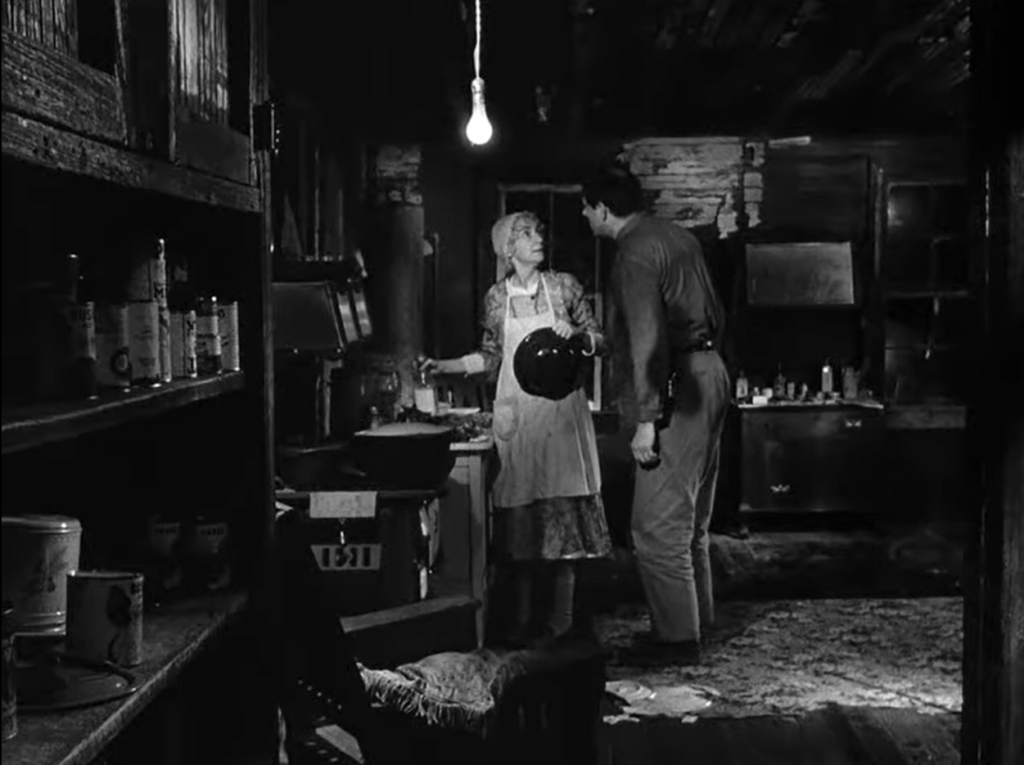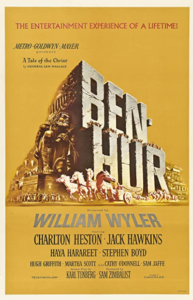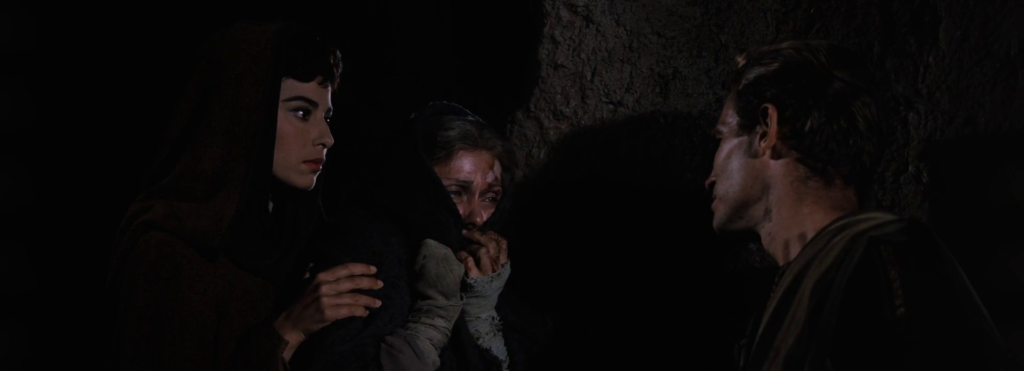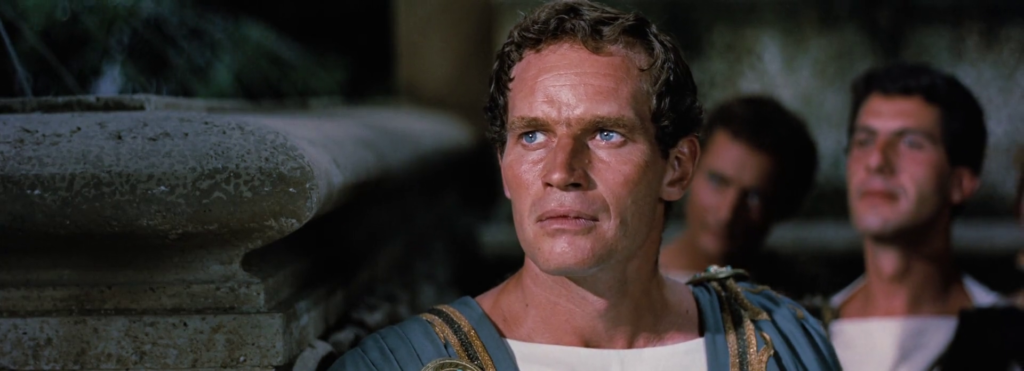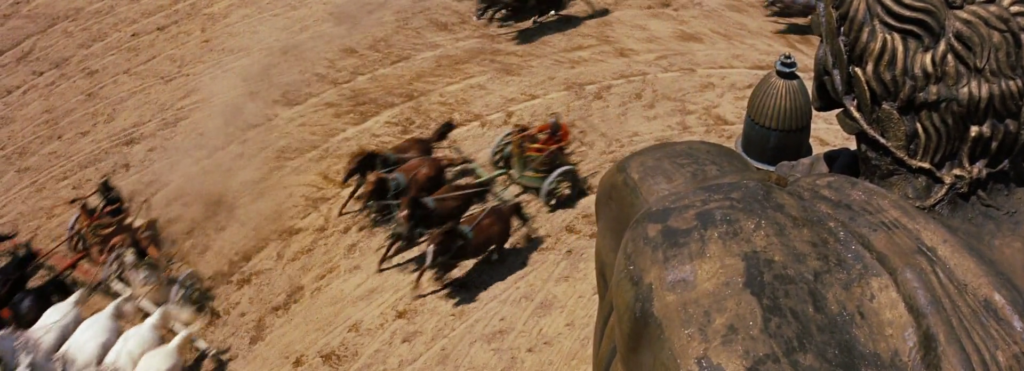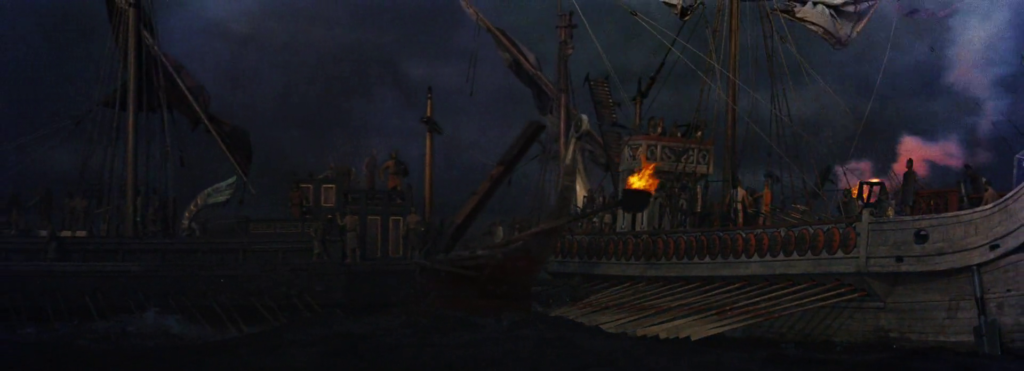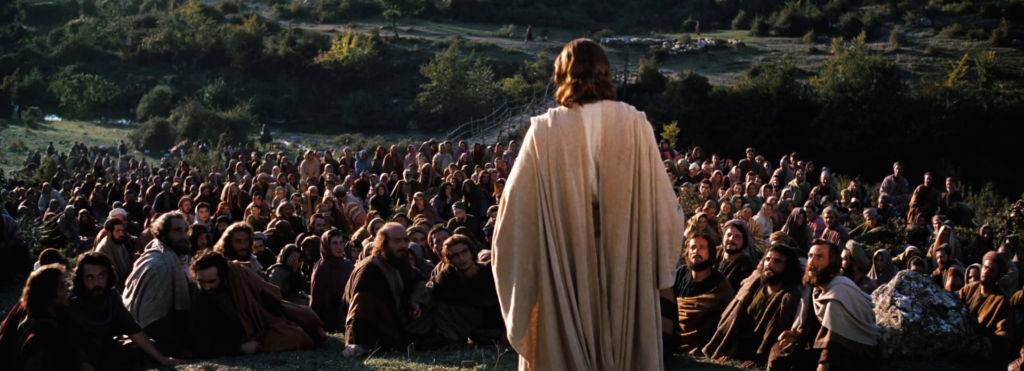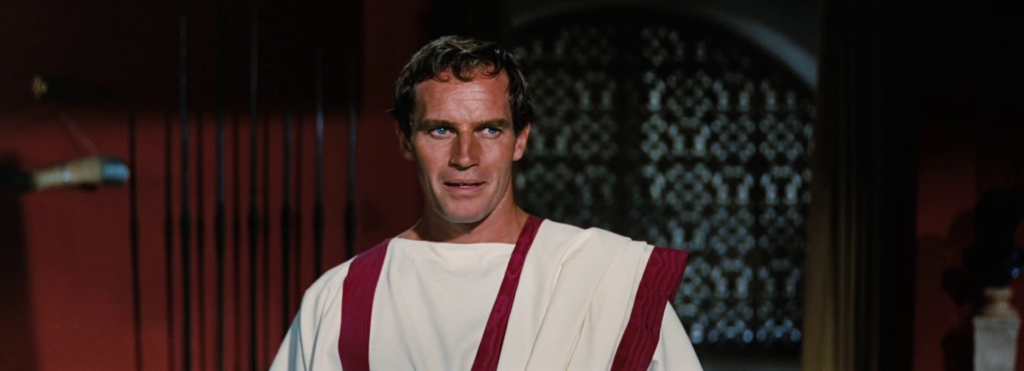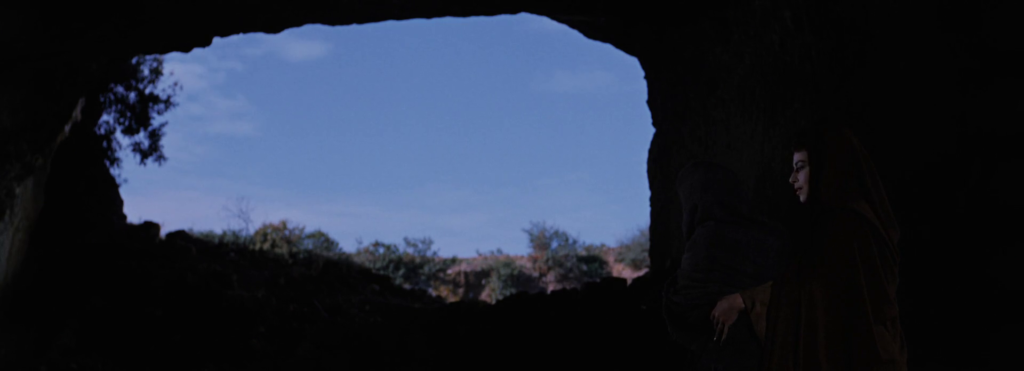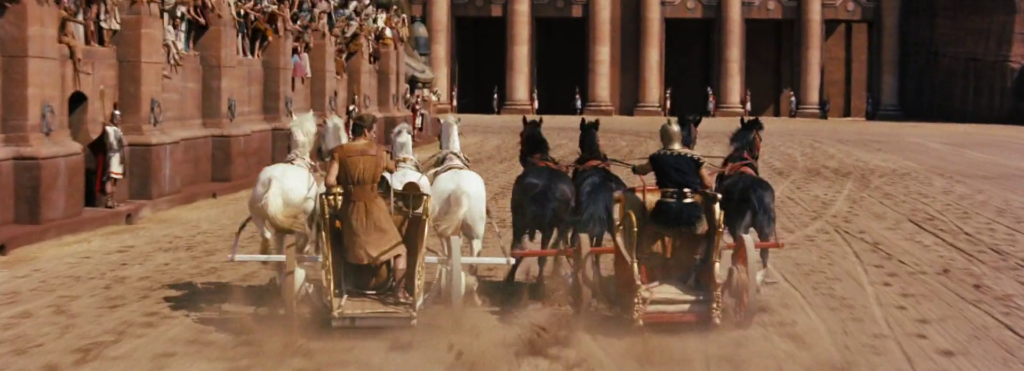|
Genres, Themes, Actors, and Directors:
- Anthony Quinn Films
- Artists
- Biopics
- Henry Daniell Films
- Kirk Douglas Films
- Mental Breakdown
- Niall MacGinnis Films
- Obsessive Love
- Vincente Minnelli Films
Review:
Vincente Minnelli directed this beautifully vibrant homage — based on the 1934 novel by Irving Stone — to the life and art of Vincent Van Gogh. Kirk Douglas (who was told early on that he looked like Van Gogh — he does) is perfectly cast as the tortured but gifted young artist who so clearly wants to do good in the world — and who recognizes that his own intensities are simultaneously what drive him and get in his way. It’s heartbreaking watching Van Gogh first be rejected from mainstream ministry work:
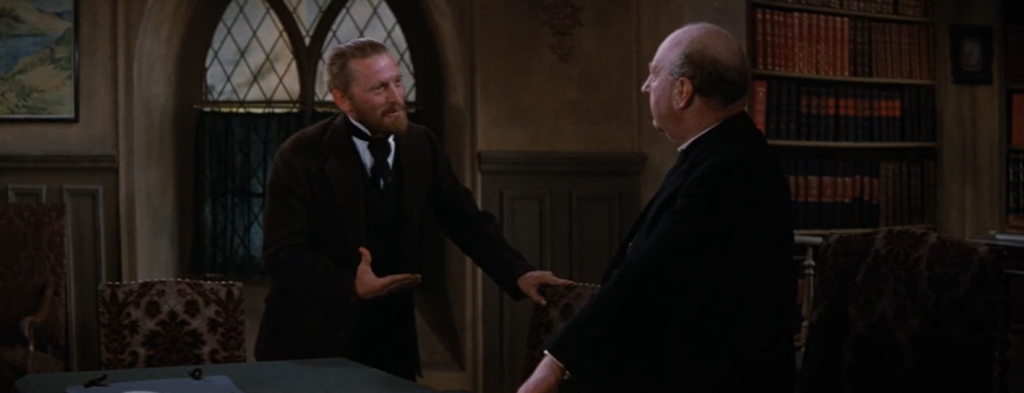
… then by his understandably overwhelmed cousin (Sterke), who recognizes that Vincent’s obsessive love is more than she can manage:
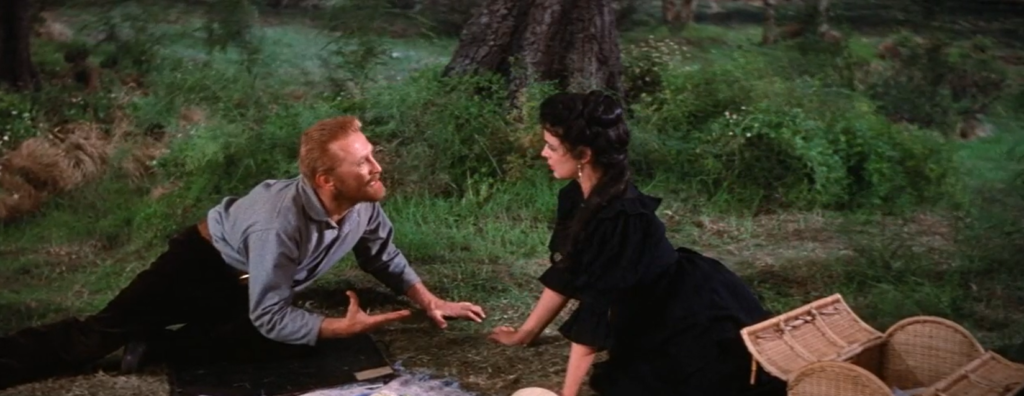
We’re happy for Vincent when he meets a like-minded soul in Brown, who he’s able to live and paint with for at least a while:
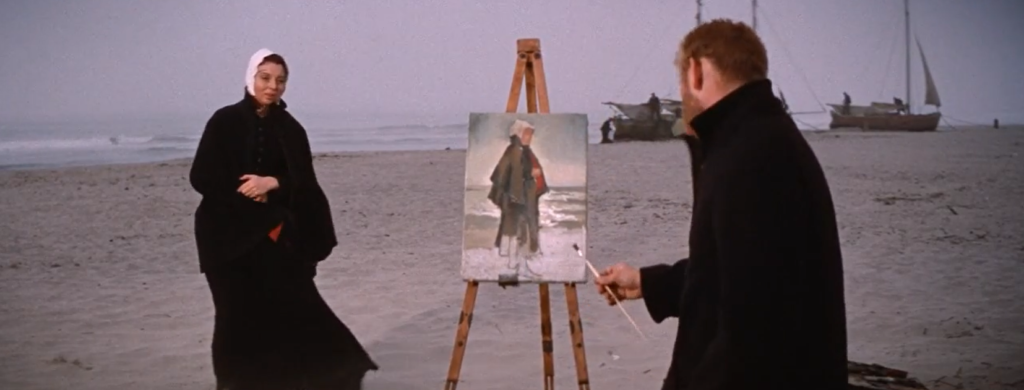
… though the eventual dissolution of their partnership is painful to watch, too. Thankfully, Vincent’s caring brother Theo is a consistent source of quiet sustenance:
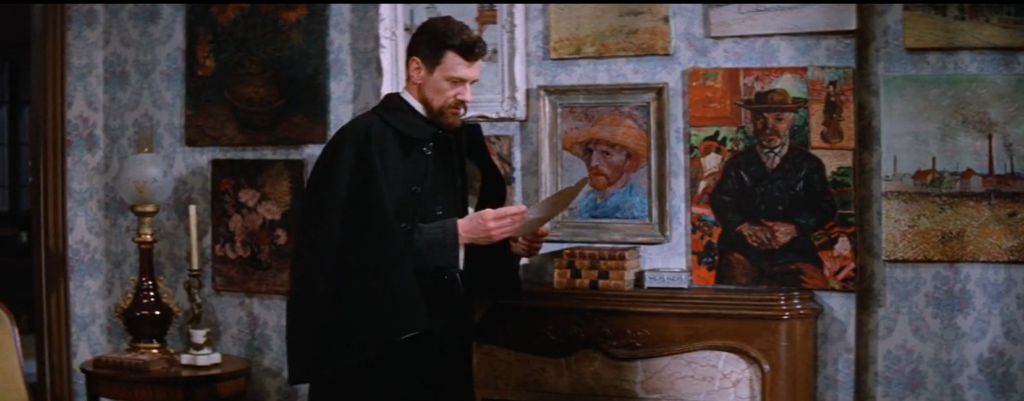
… and we remain grateful for everything he did to help make Vincent’s life easier while he could. His hiring of Gaugin to “babysit” Vincent leads to yet more heartwrenching scenes, culminating in Vincent’s infamous slicing off of his own ear:
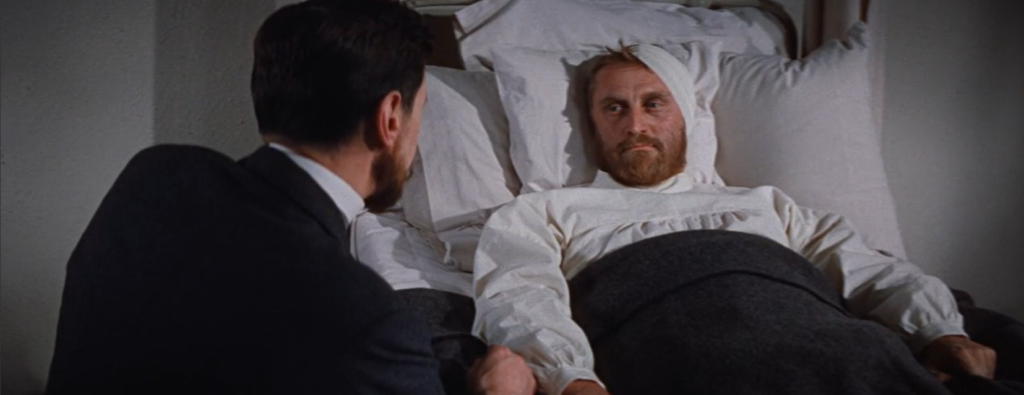
Vincent’s personal recognition and insistence that he will be safest in a sanitorium makes us grateful for the self-preservation he possessed, at least for a while (Marion Ross of “Happy Days” fame plays the nun below):
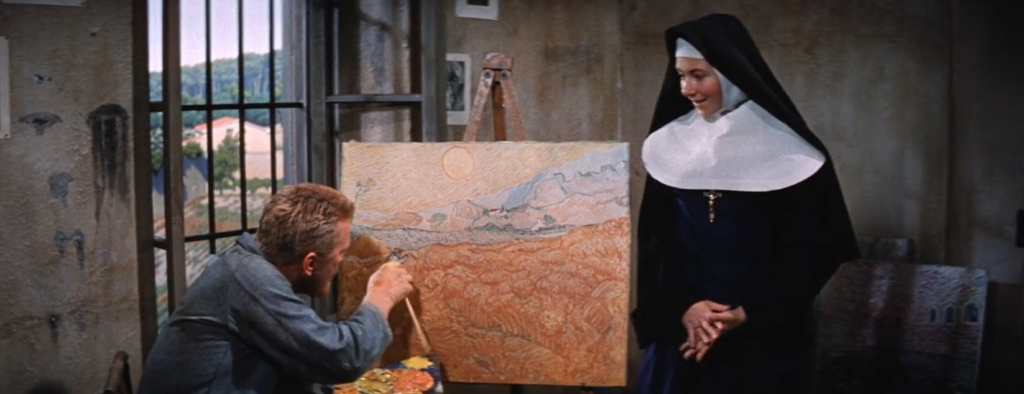
Most marvelous about this picture, however, are Minnelli’s successful attempts to show us Van Gogh working on dozens of his best known pieces, across a variety of landscapes and scenarios (below, Everett Sloane portrays Dr. Paul Gachet, who ‘treated’ Vincent during his last years of life):
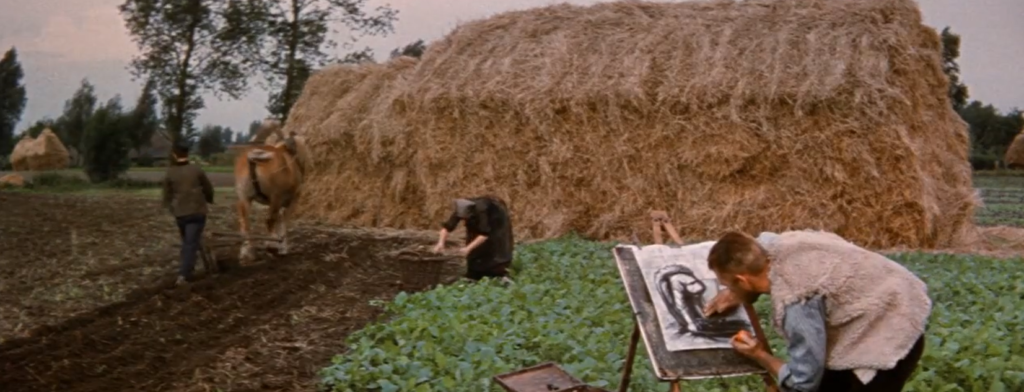
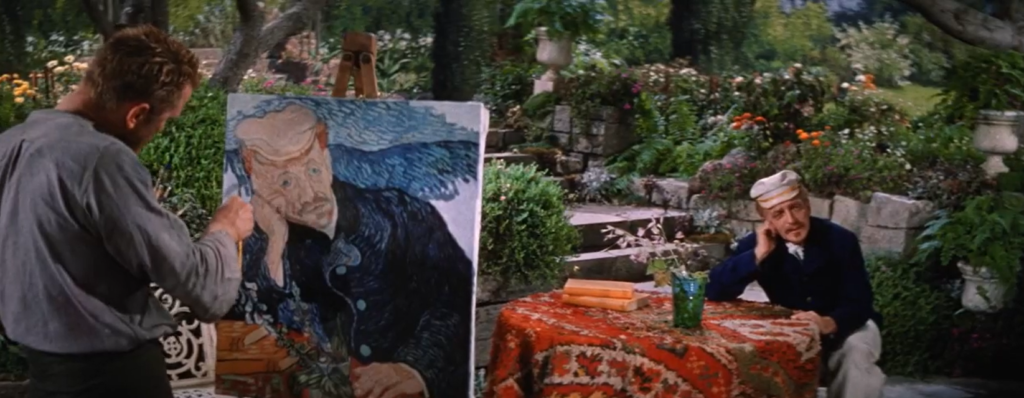
It’s also a joy to hear so much smart dialogue about art and colors, as when Vincent is explaining his process to Gaugin, who utilizes a different approach:
“When I paint the sun, I want the people to feel it revolving — giving off light and heat. When I paint a peasant, I want to feel the sun pouring into him like it does into the corn… Look, Paul: when I painted ‘The Night Cafe’ I tried to show evil, the most violent passions of humanity. I painted it blood red and dark yellow, and a green billiard table in the middle, four lemon-yellow lamps with a glare of orange and green in an atmosphere of pale sulfur, like a furnace. I tried to show a place where a man can ruin himself — go mad — commit a crime.”
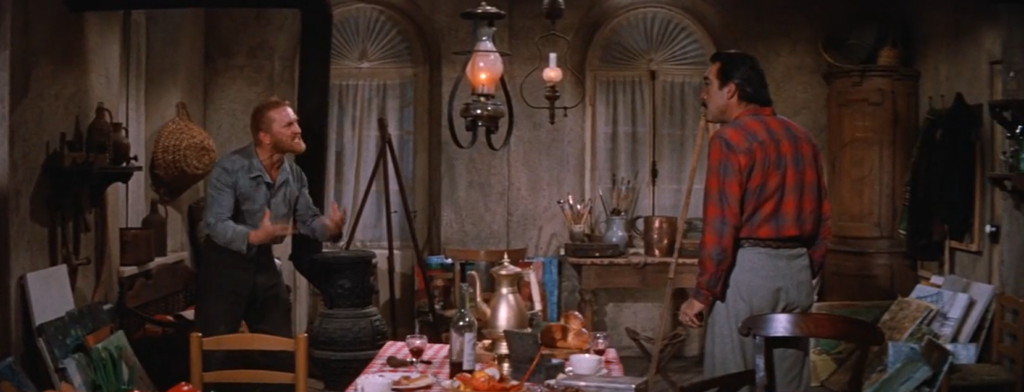
The film’s closing image, gradually panning out to see the scope of much of Van Gogh’s work:
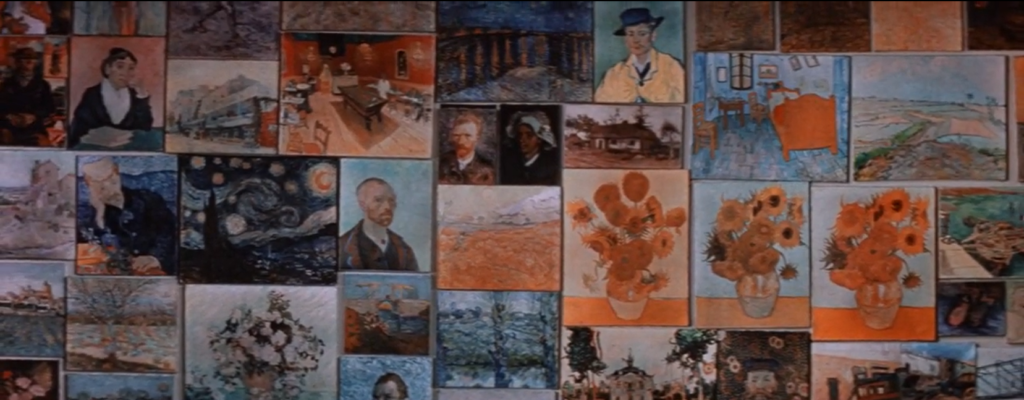
… is an especially fitting and touching finale to this fine biopic.
Notable Performances, Qualities, and Moments:
- Kirk Douglas as Vincent Van Gogh
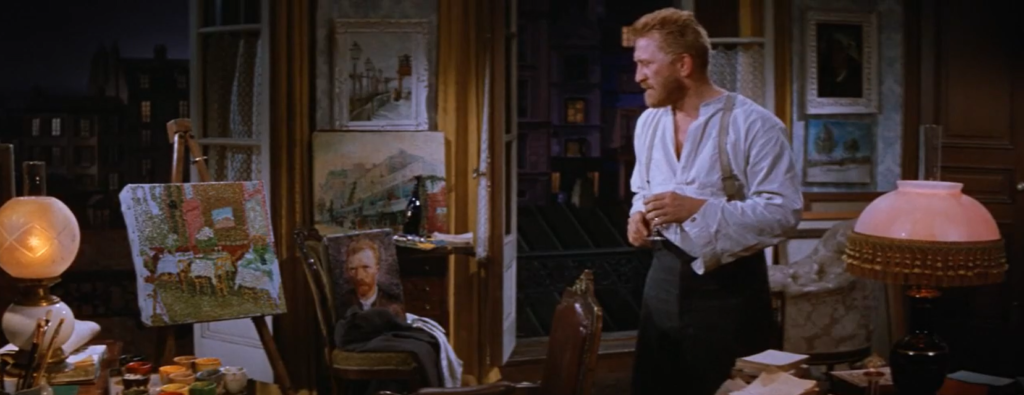
- Strong supporting performances
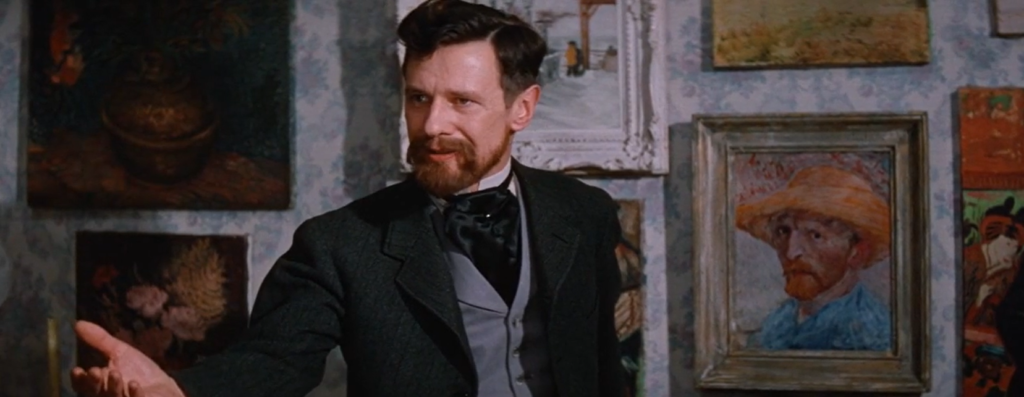 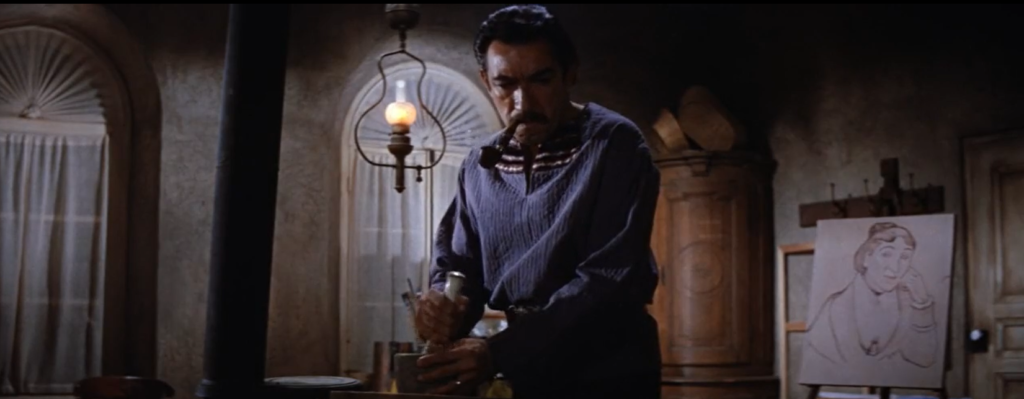
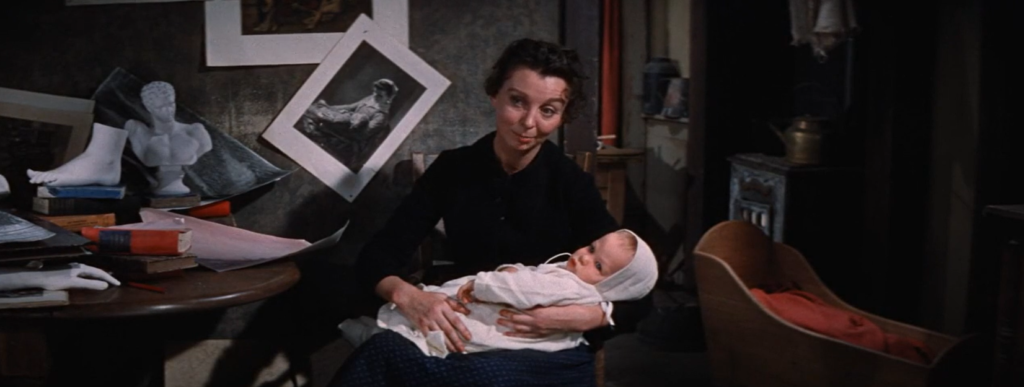
- Excellent use of location shooting
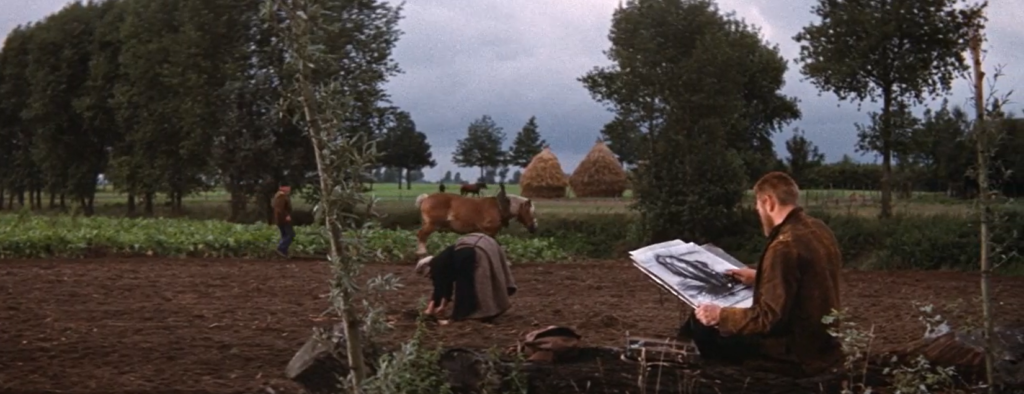
- Freddie Young’s phenomenal cinematography
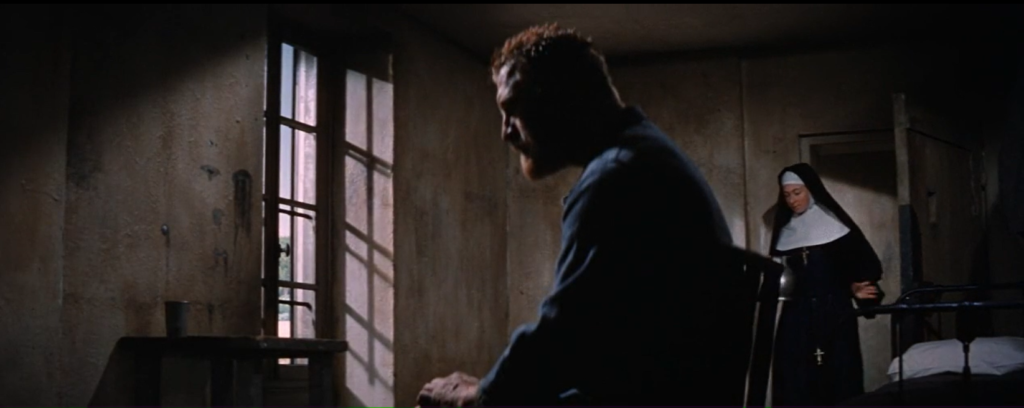
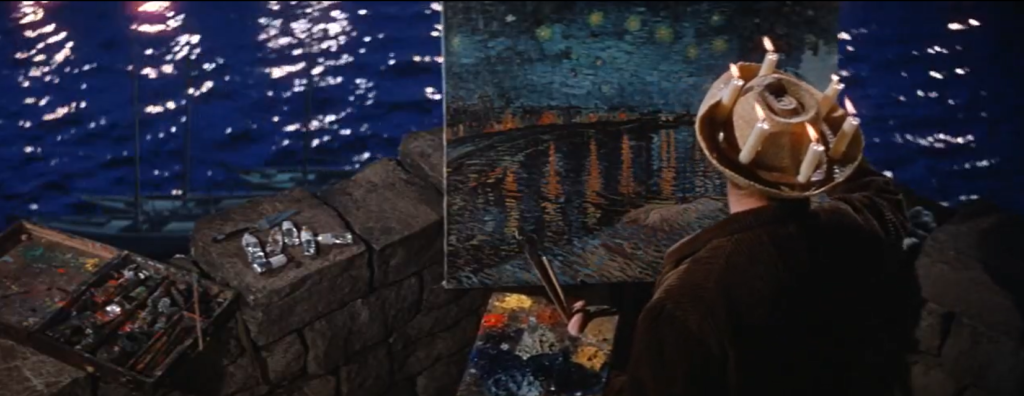
Must See?
Yes, as a fine biopic.
Categories
- Noteworthy Performance(s)
- Oscar Winner or Nominee
Links:
|
